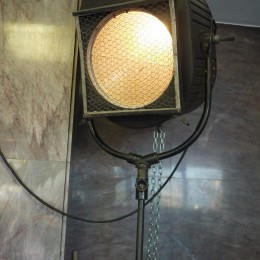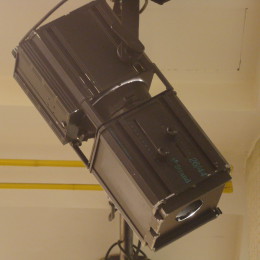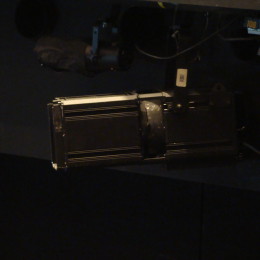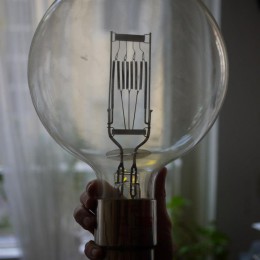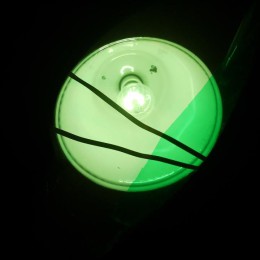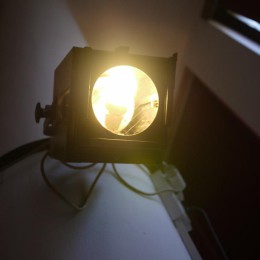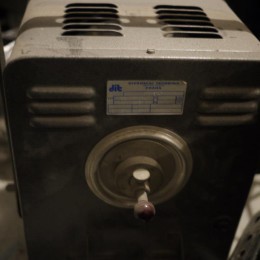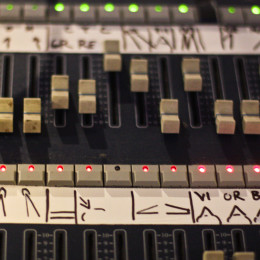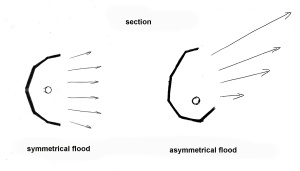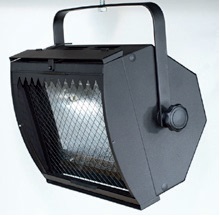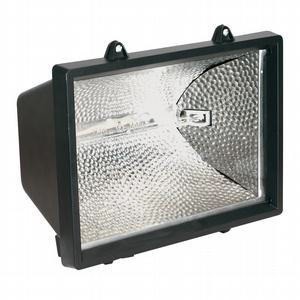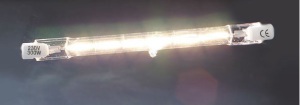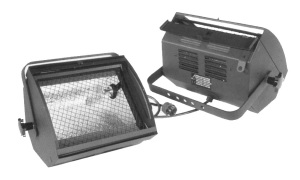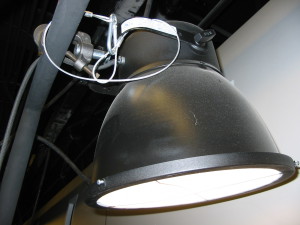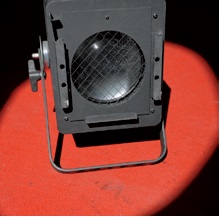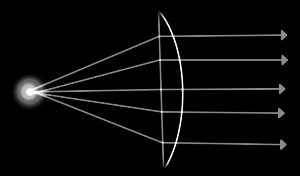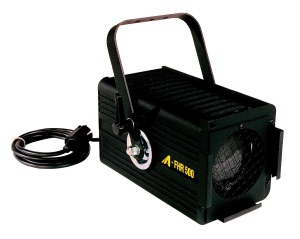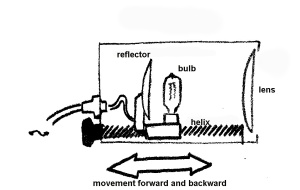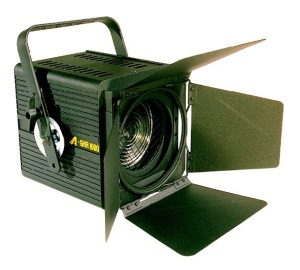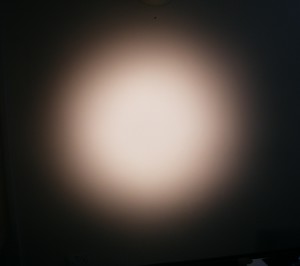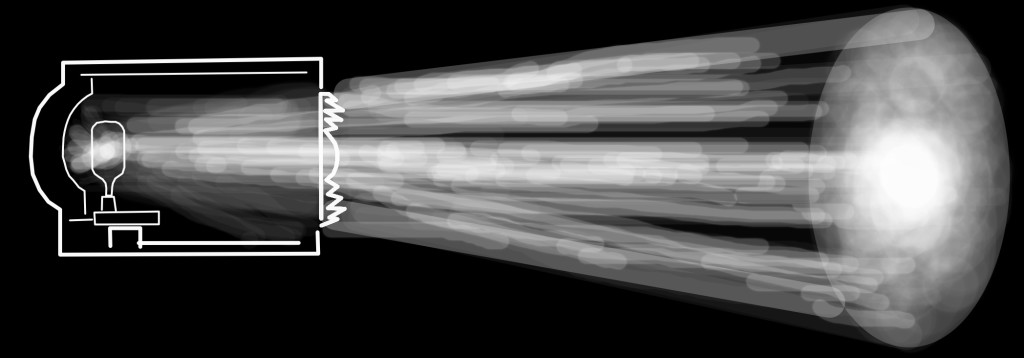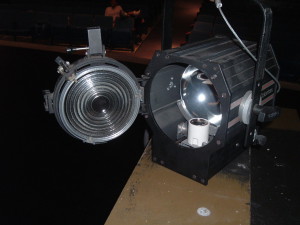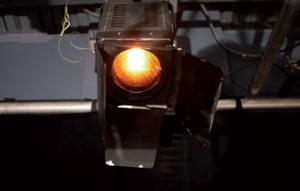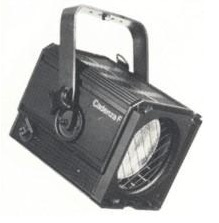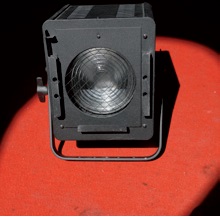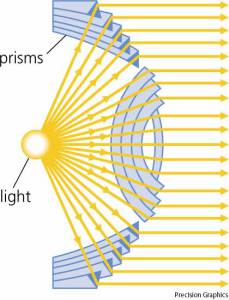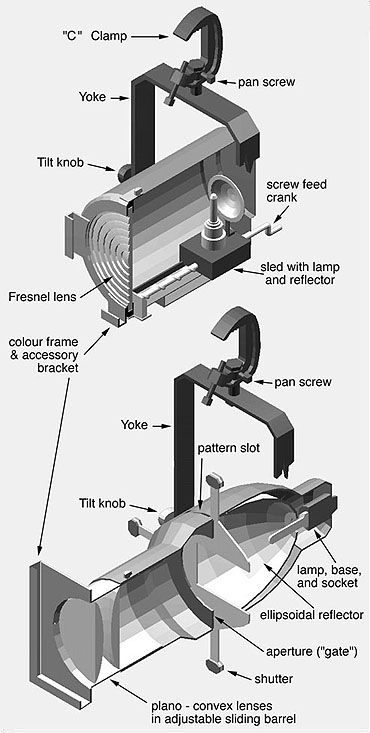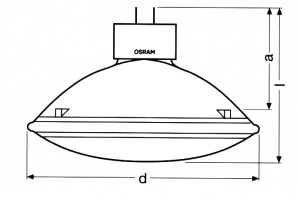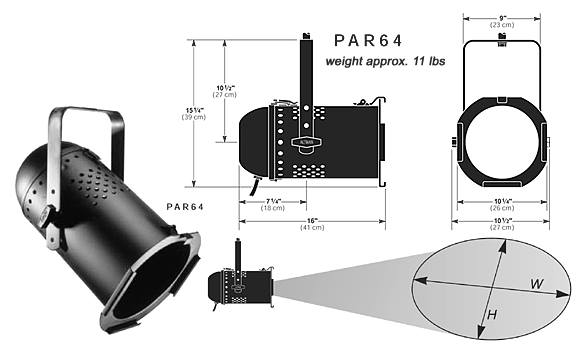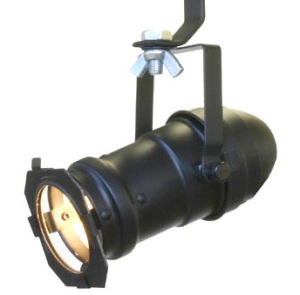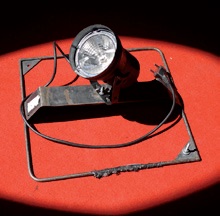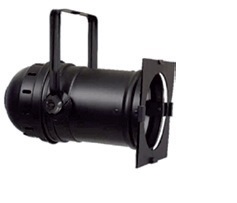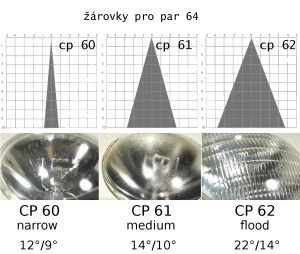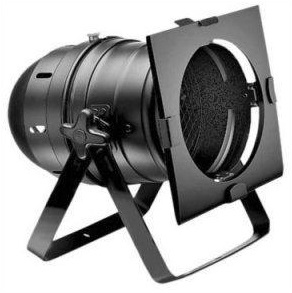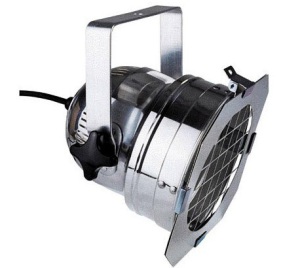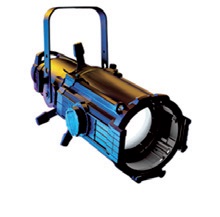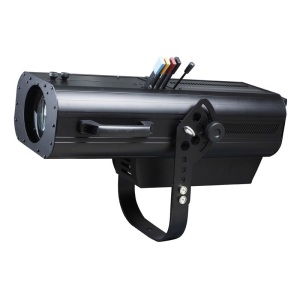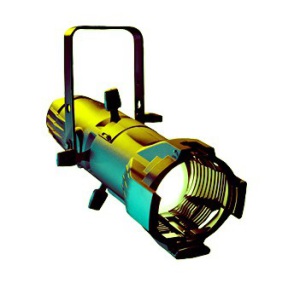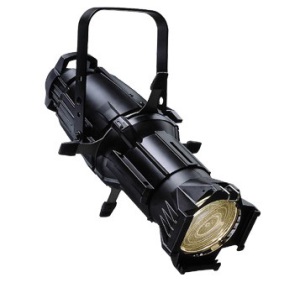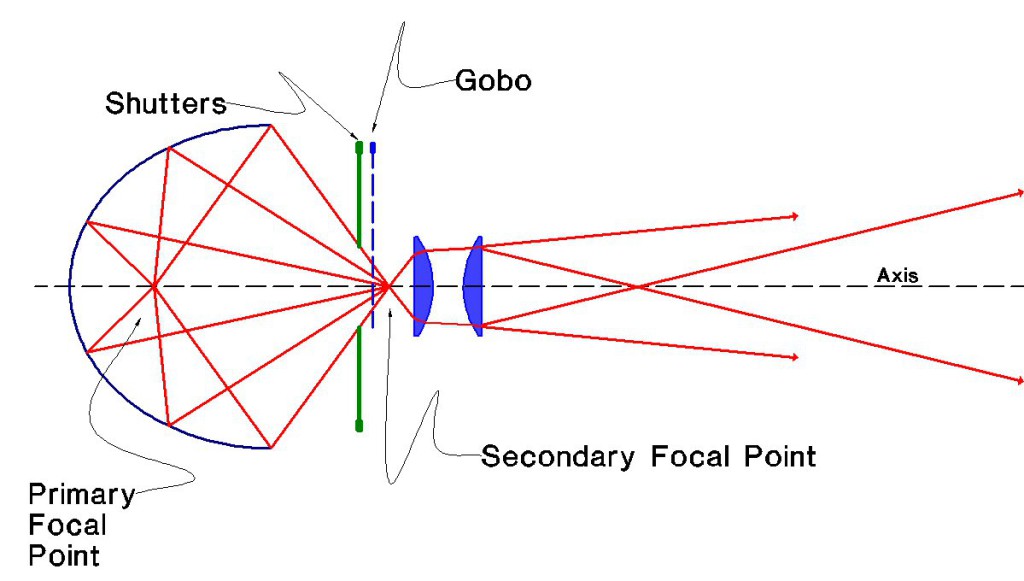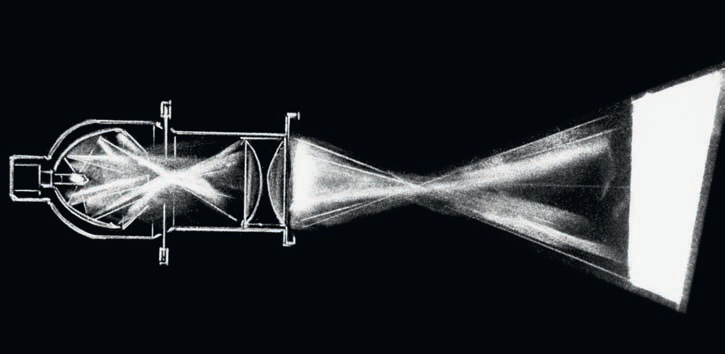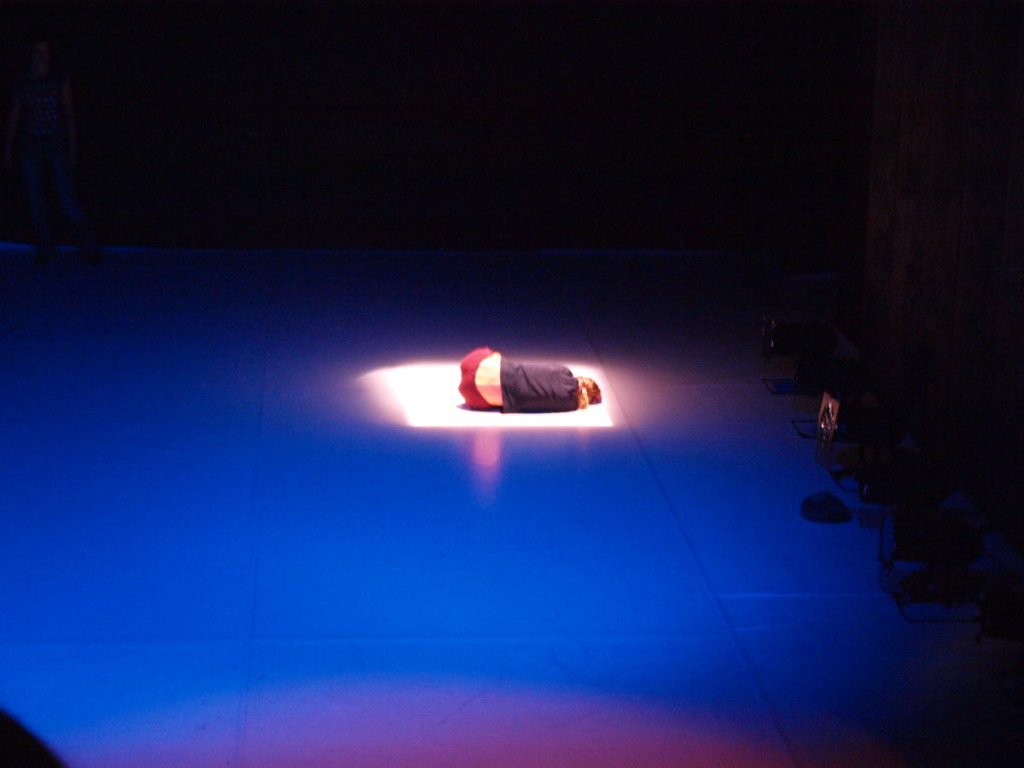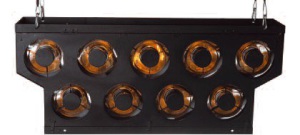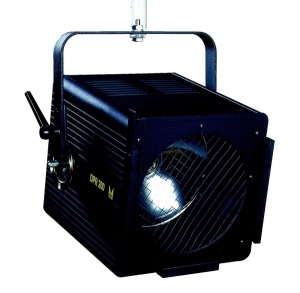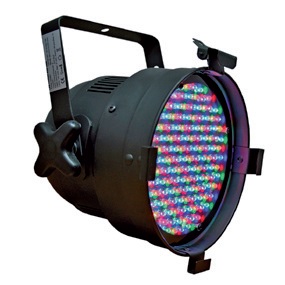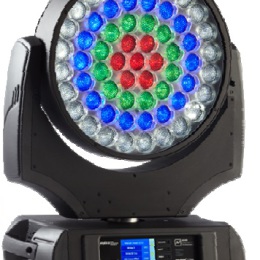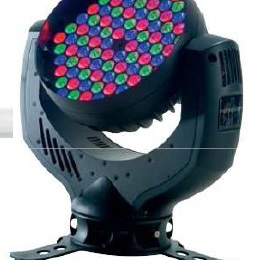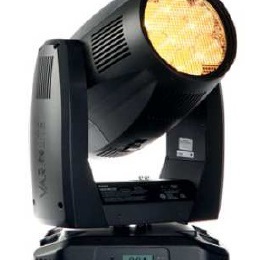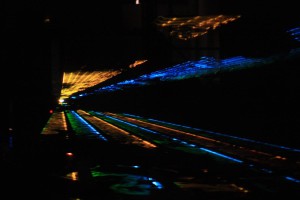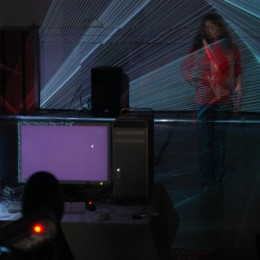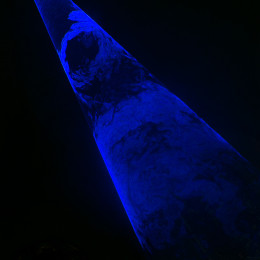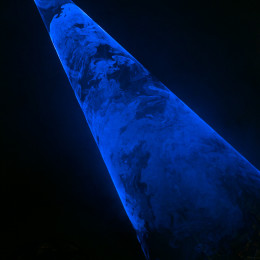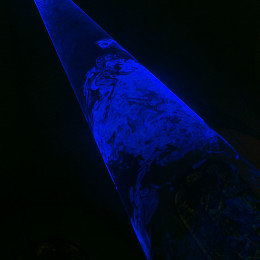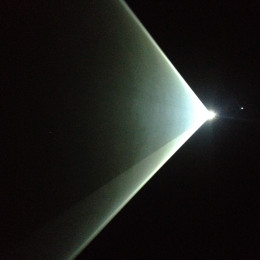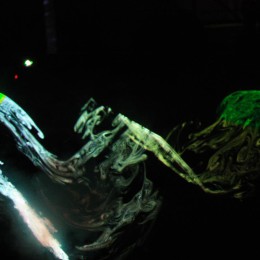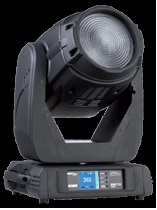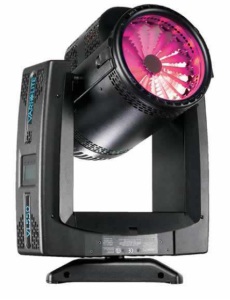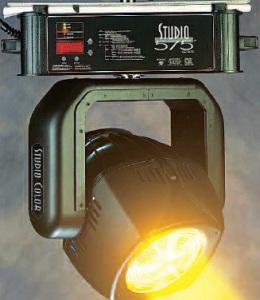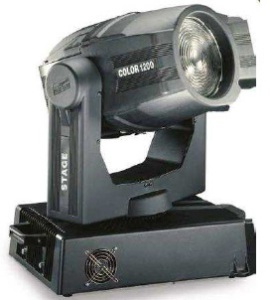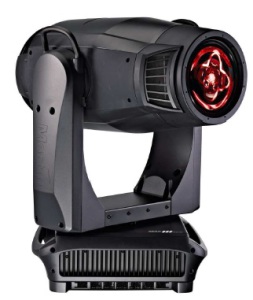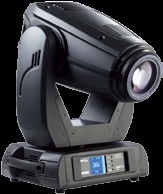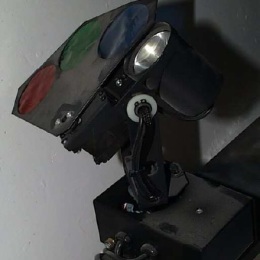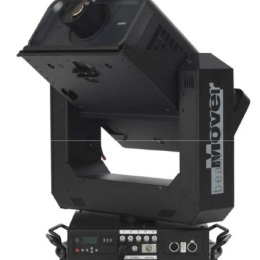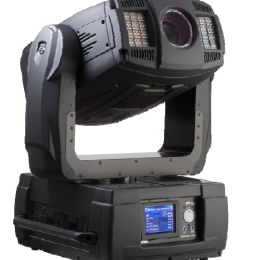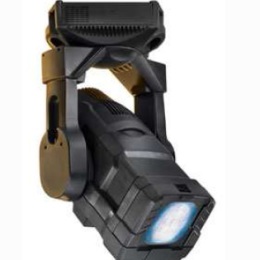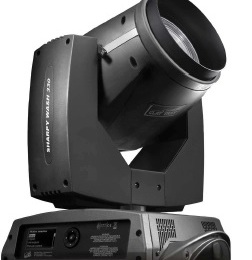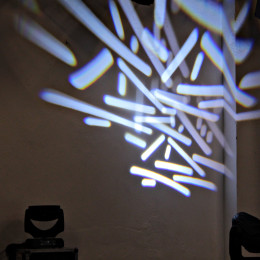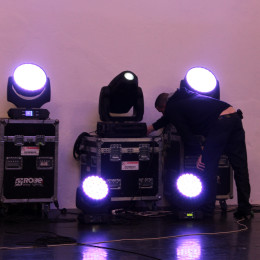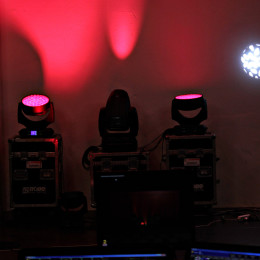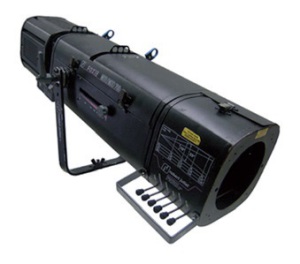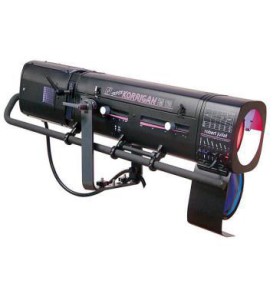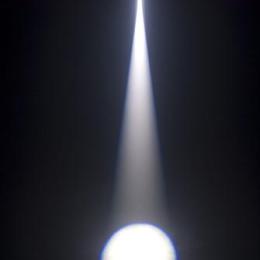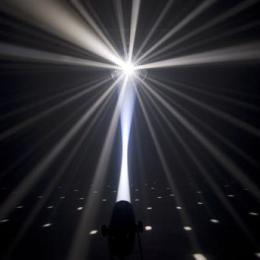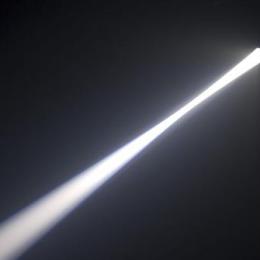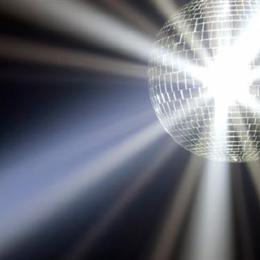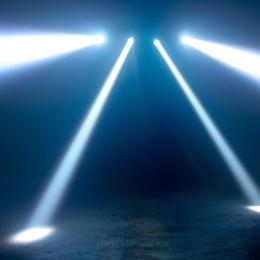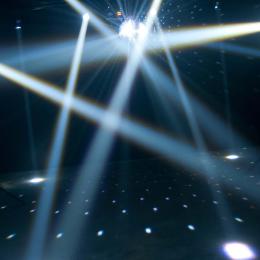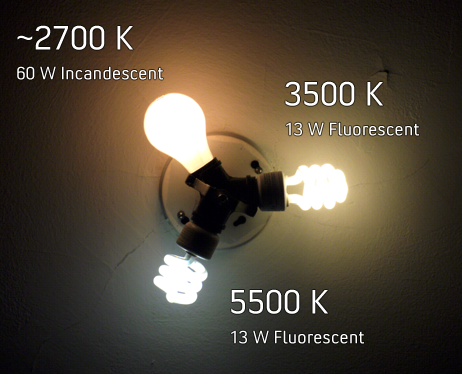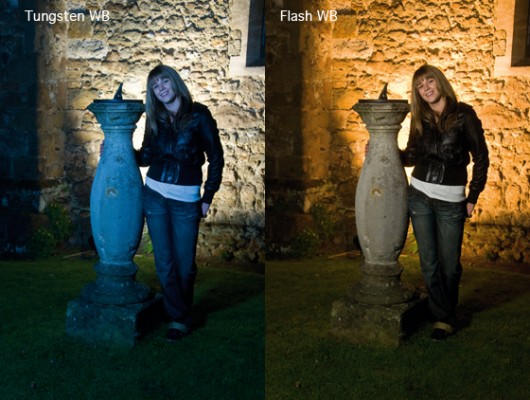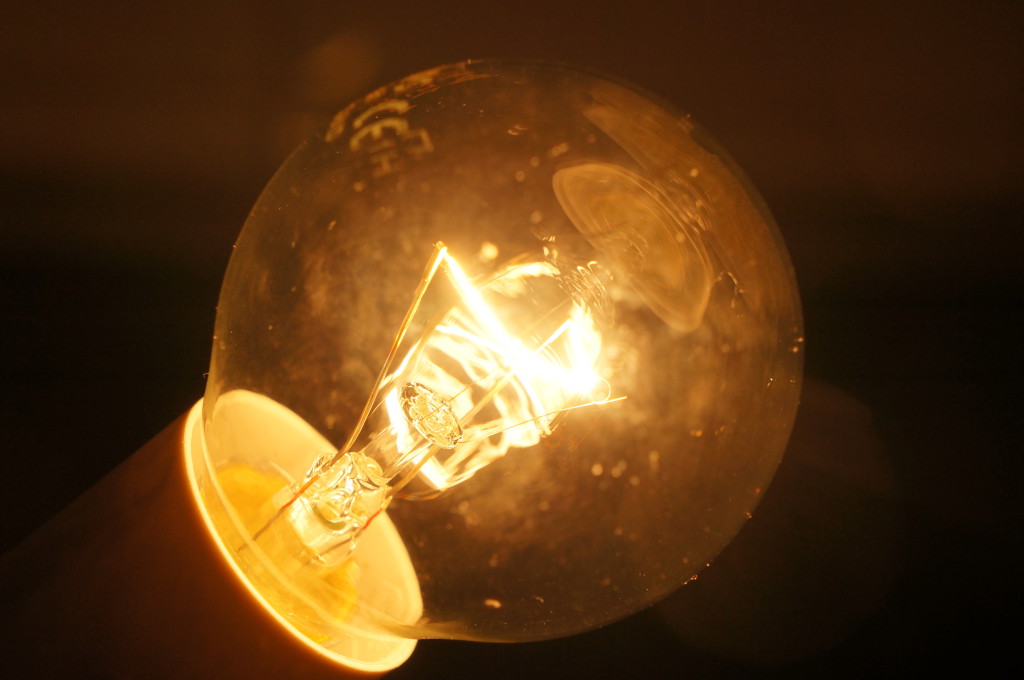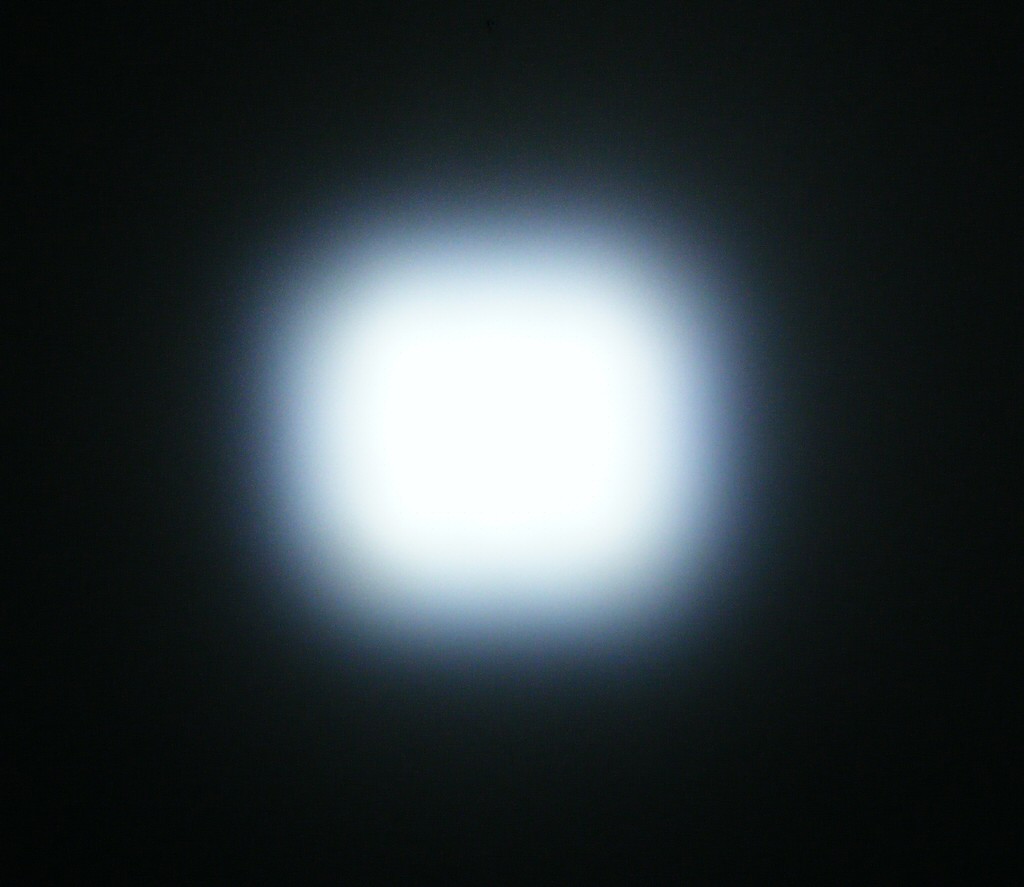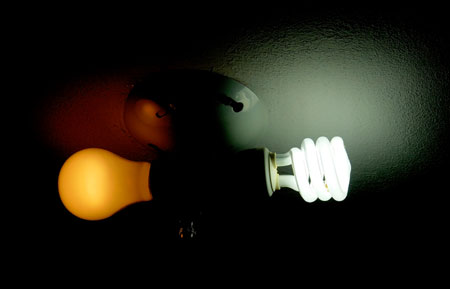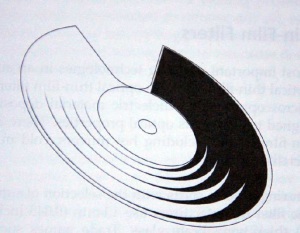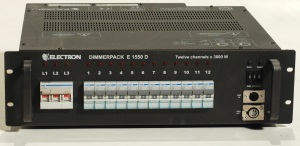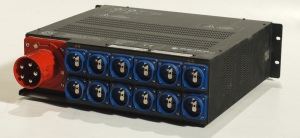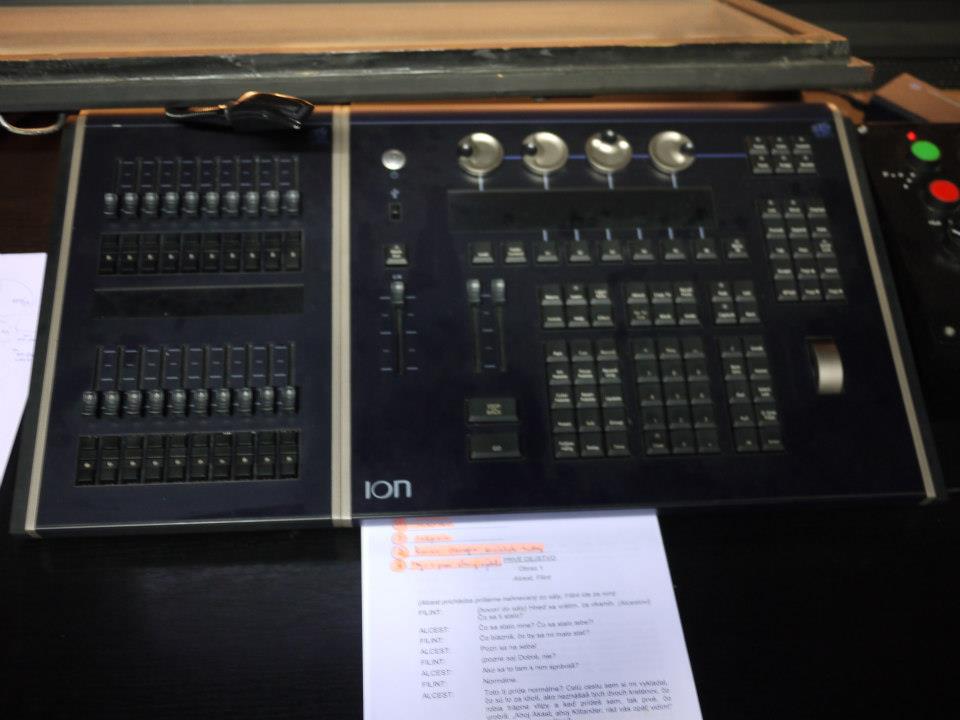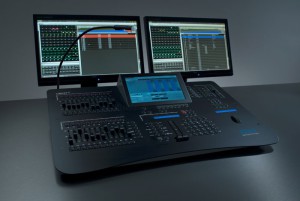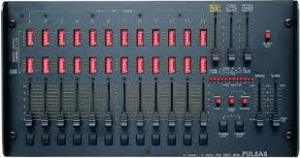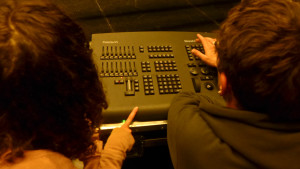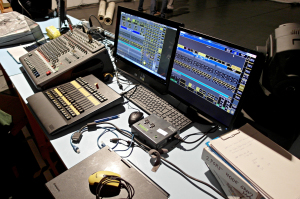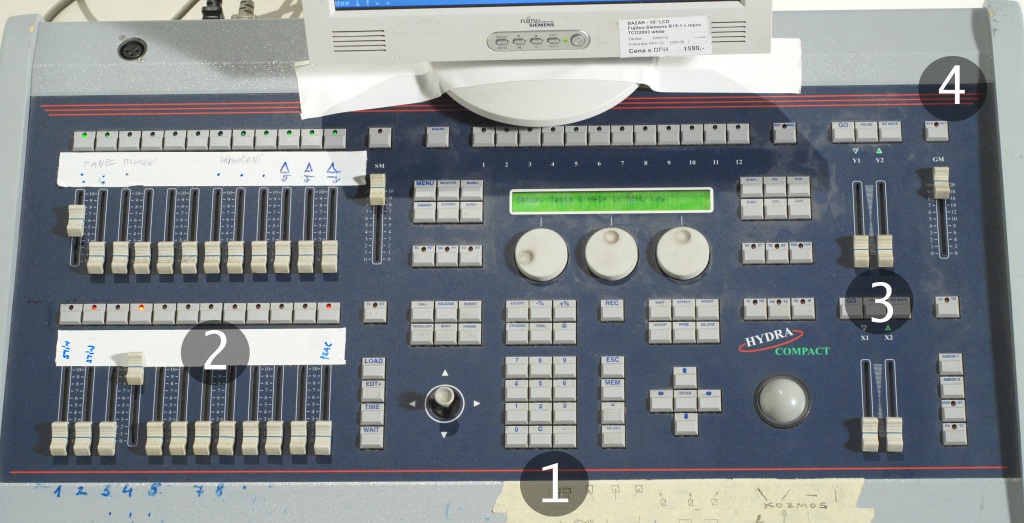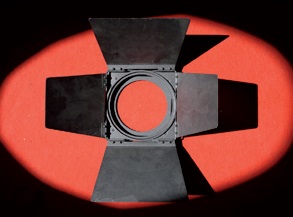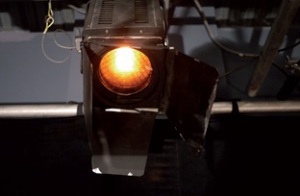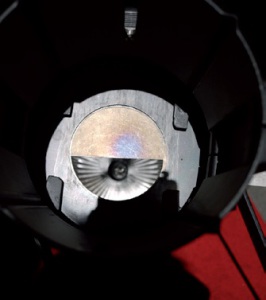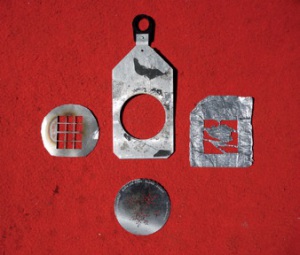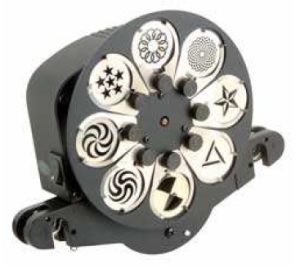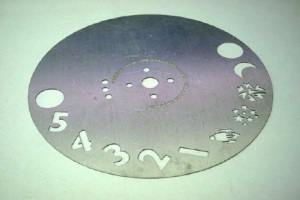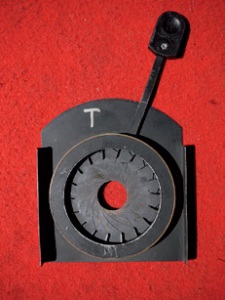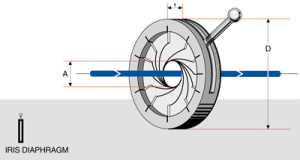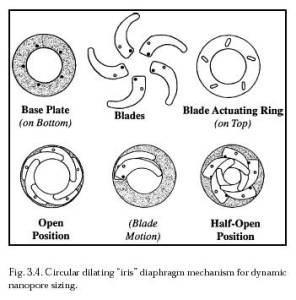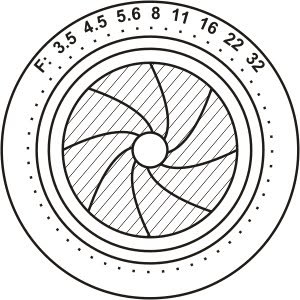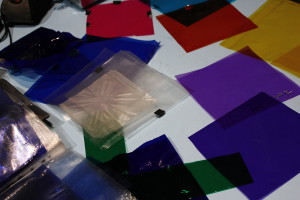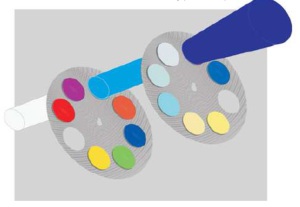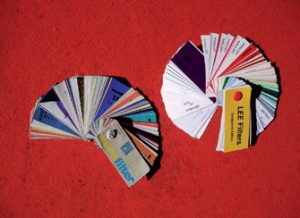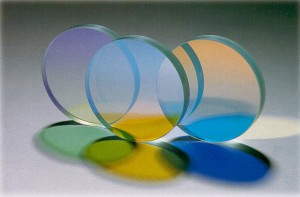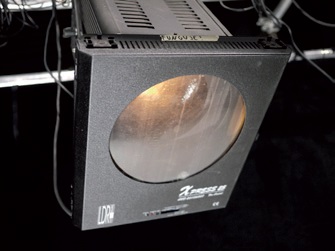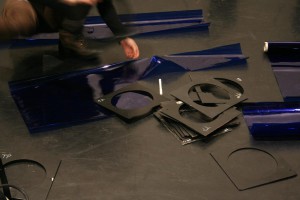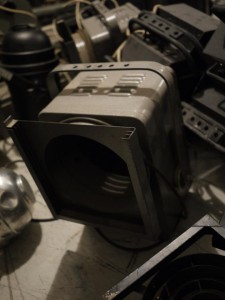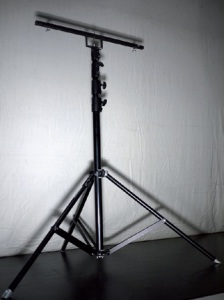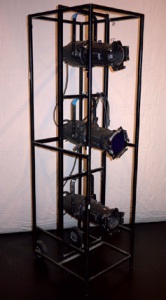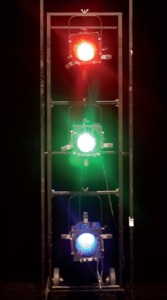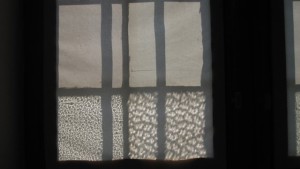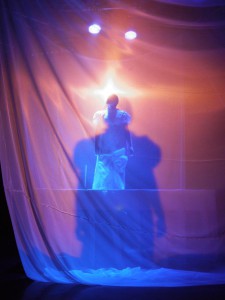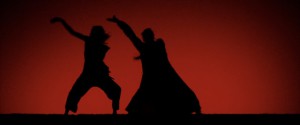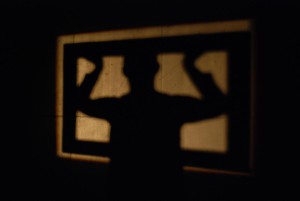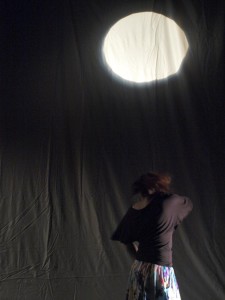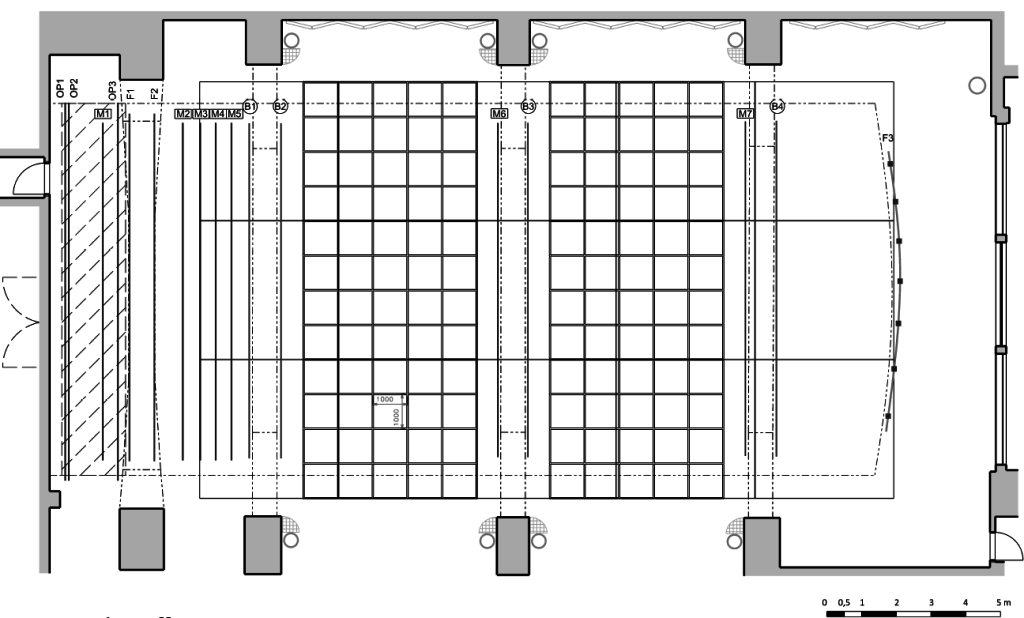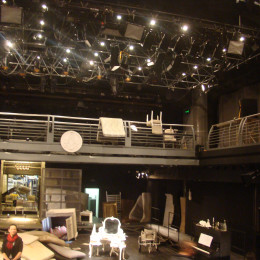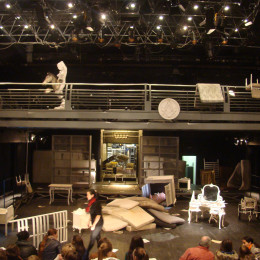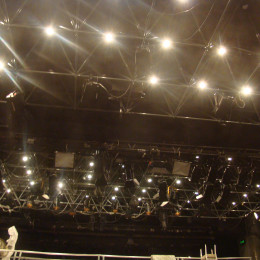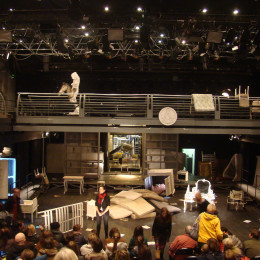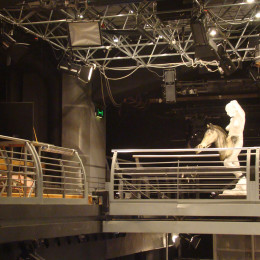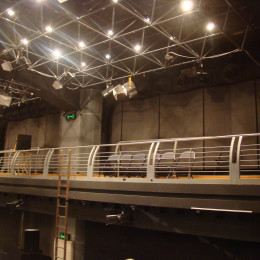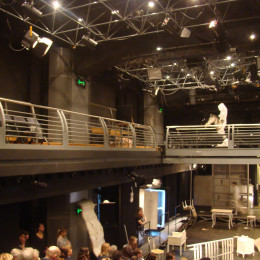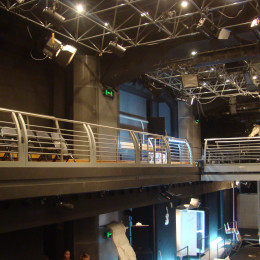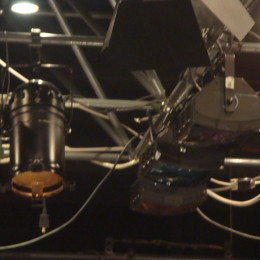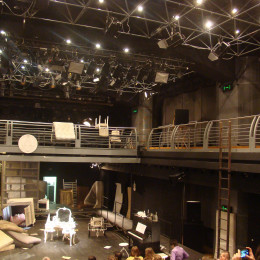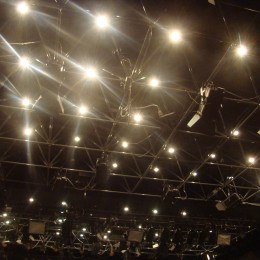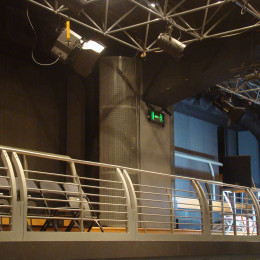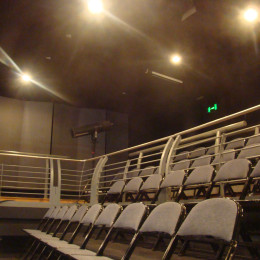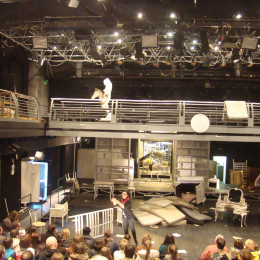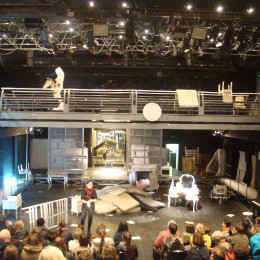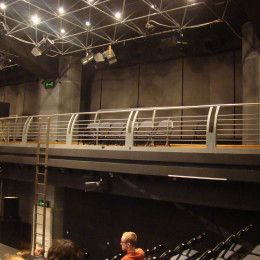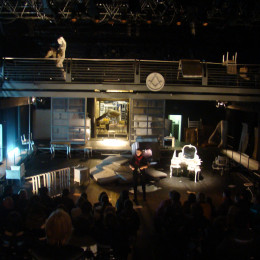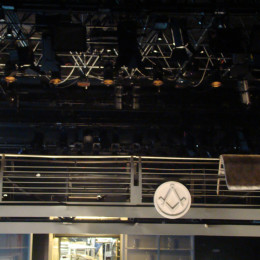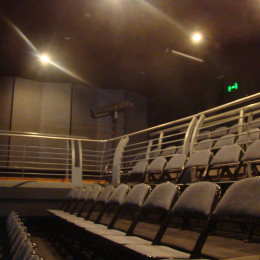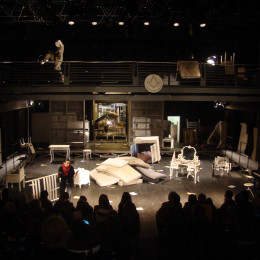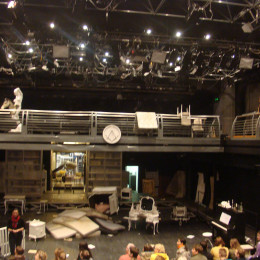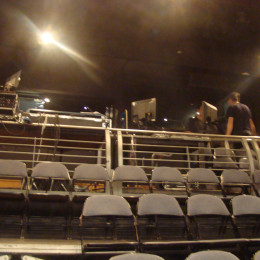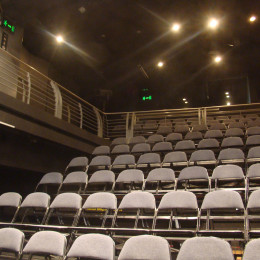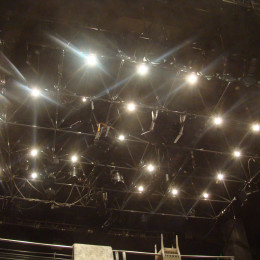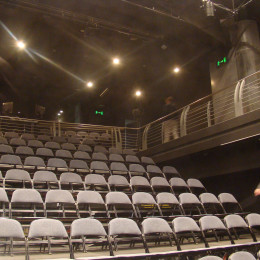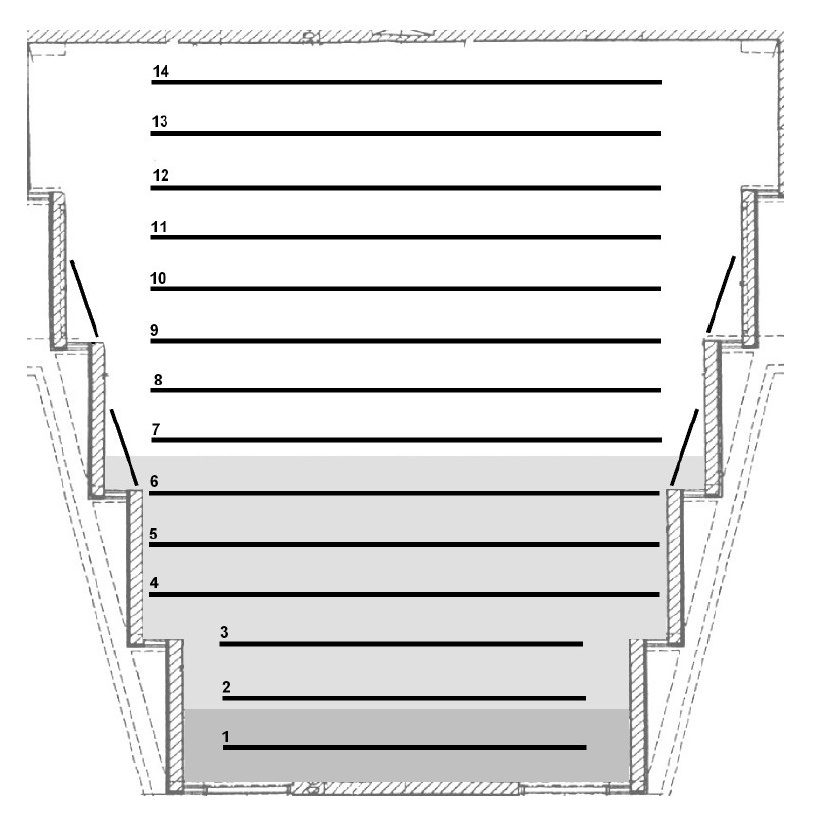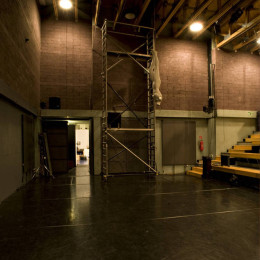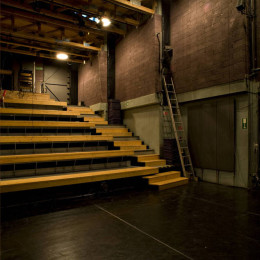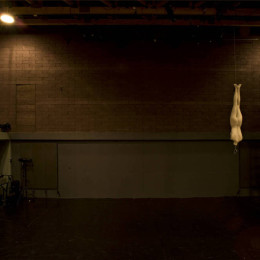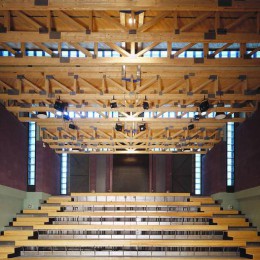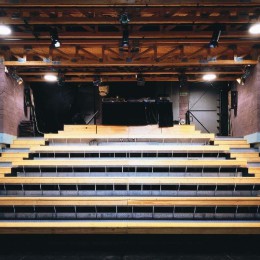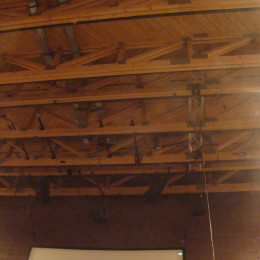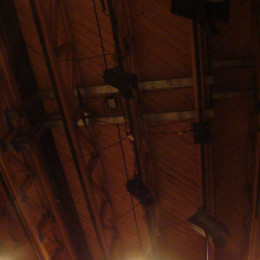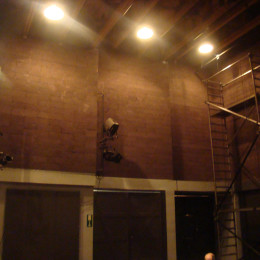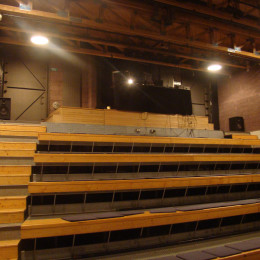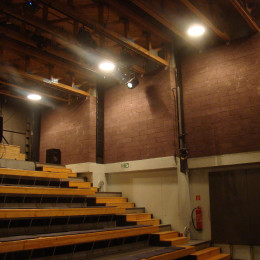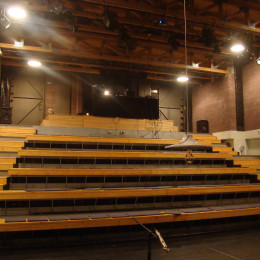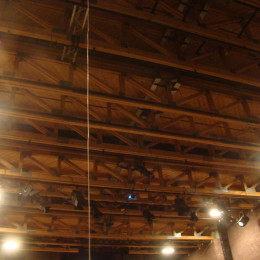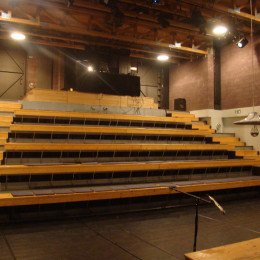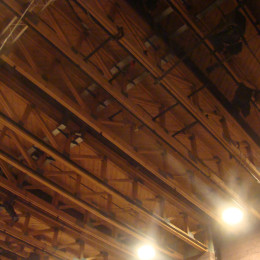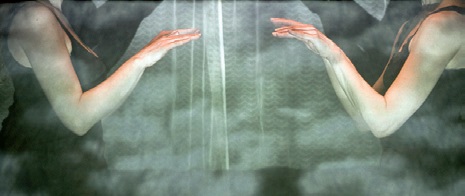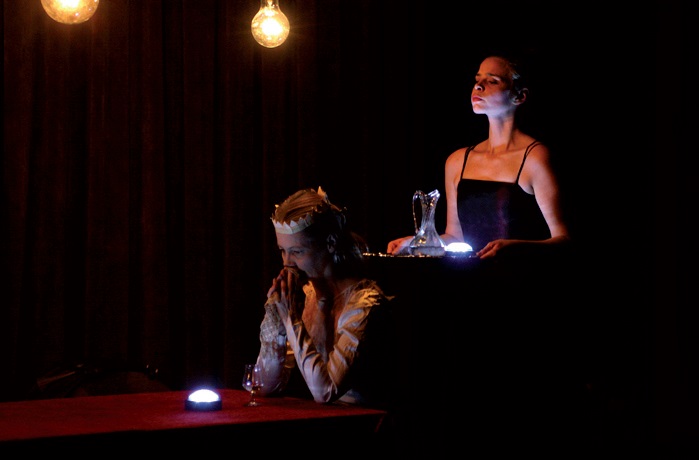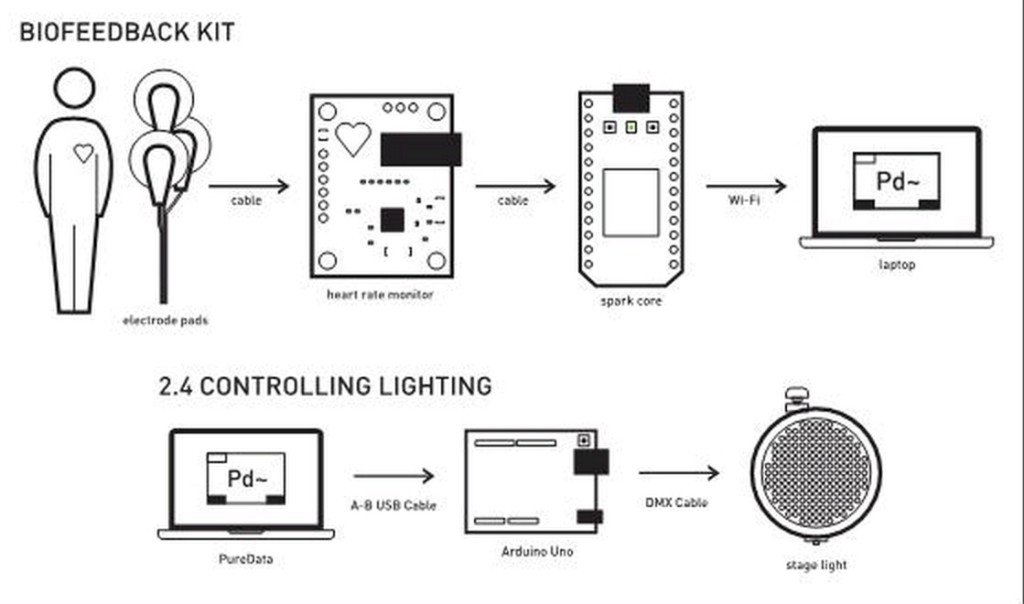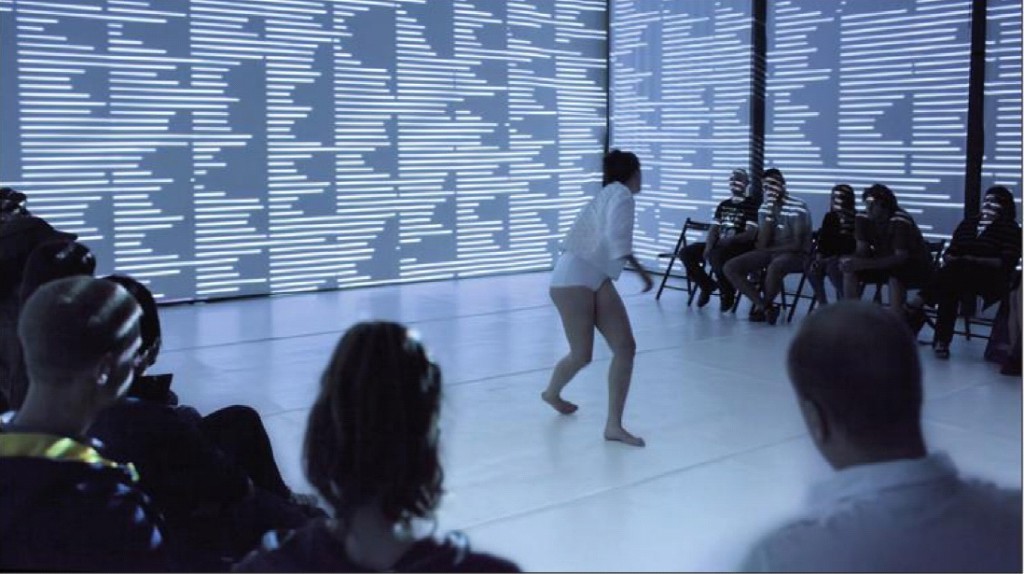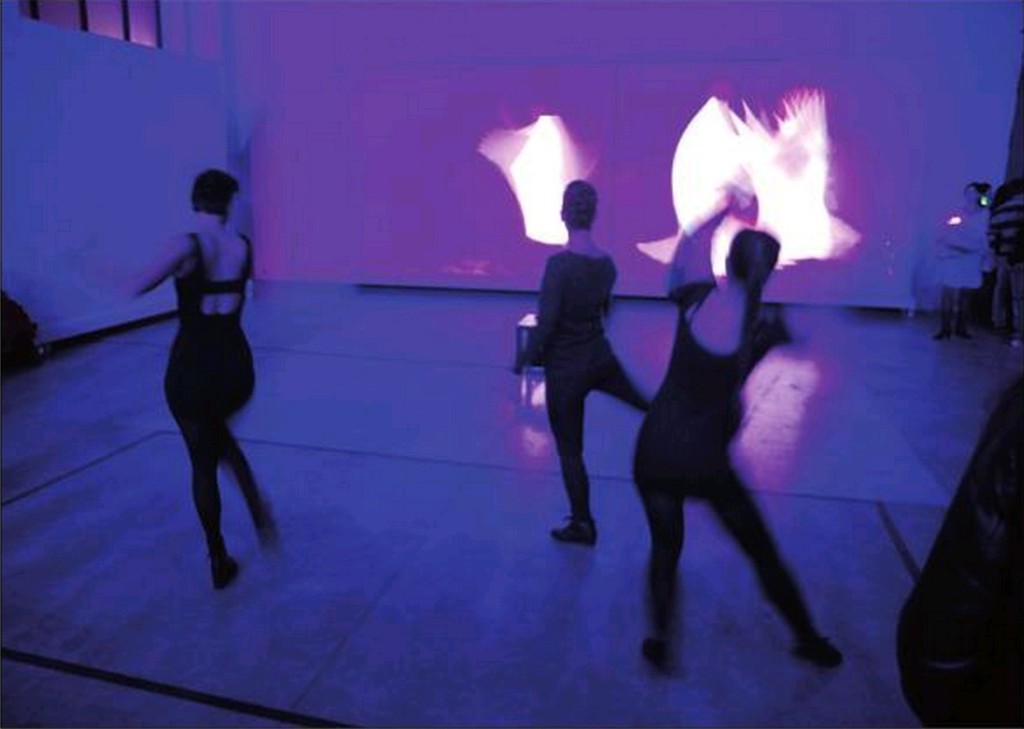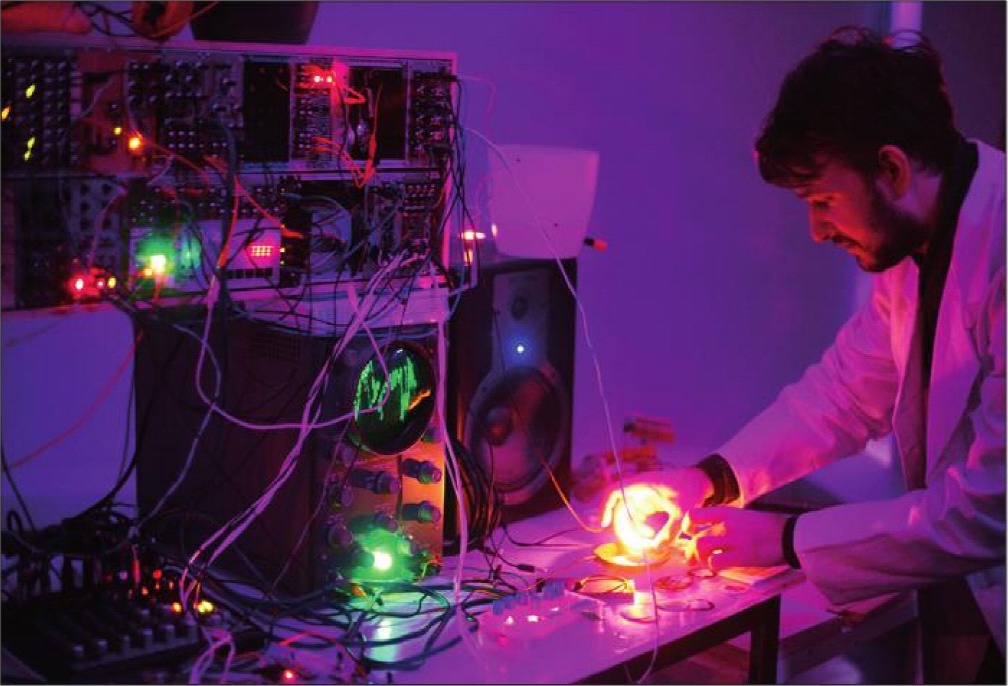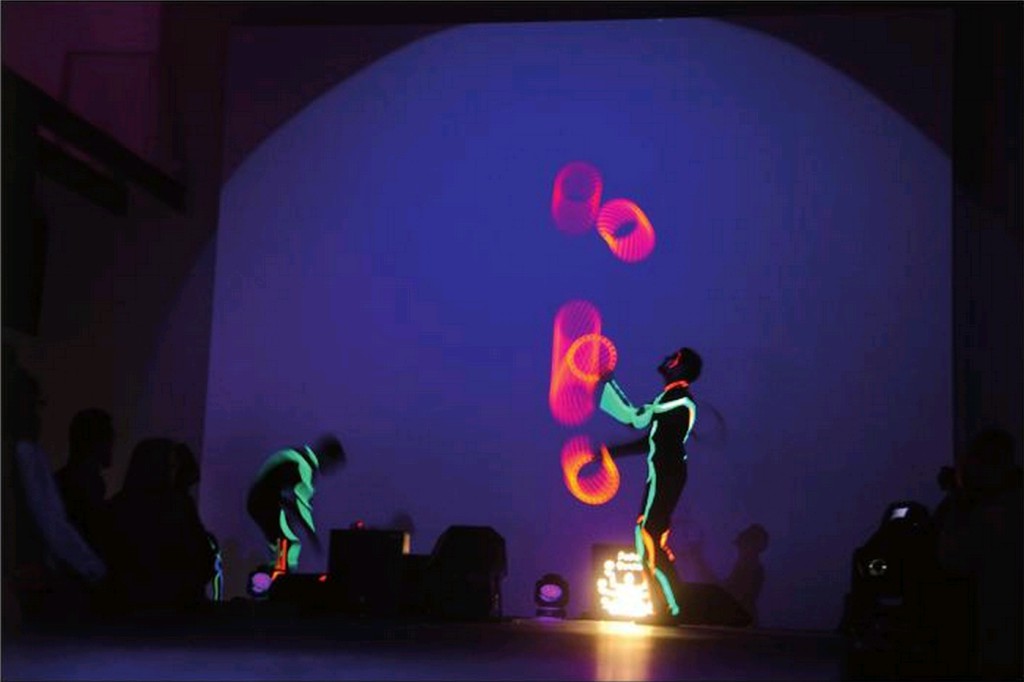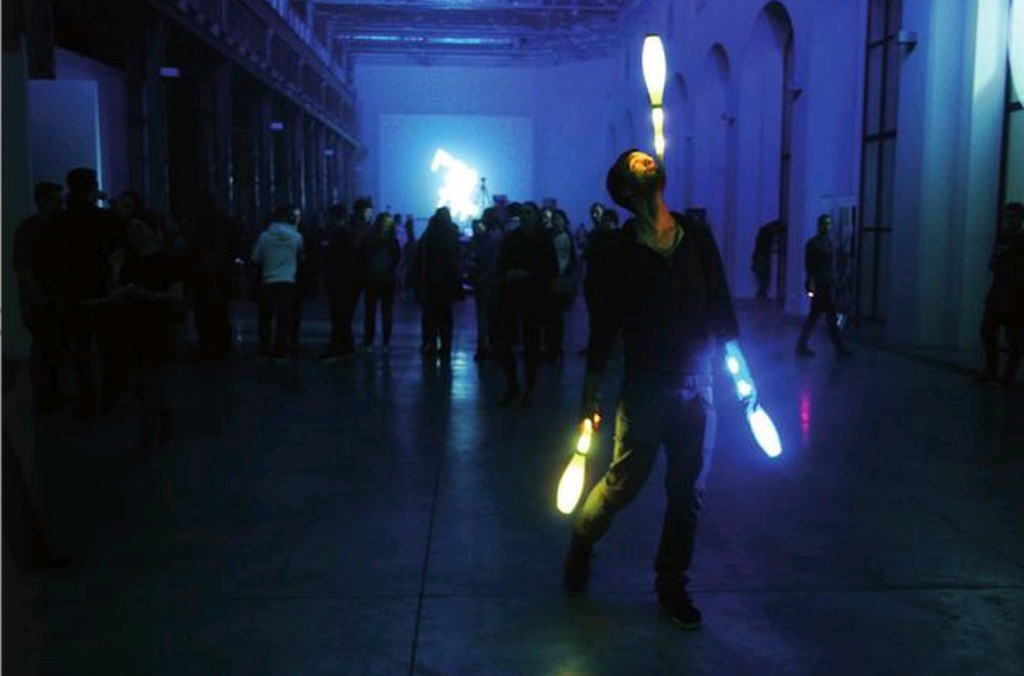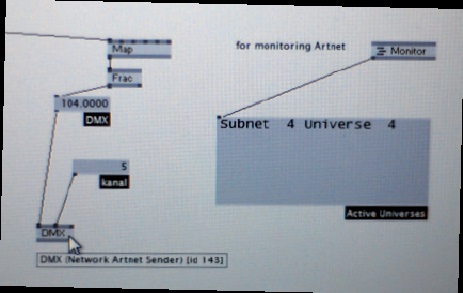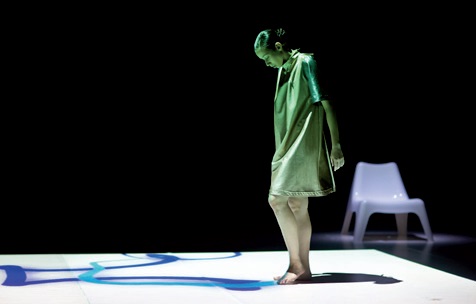Contents
EVERY SOURCE OF LIGHT HAS ITS SPECIFICATIONS
If you are a sculptor, you need to know how to cut stone and what technology to use for it. You have to have great ideas and visions, but to make it happen, you have to master the craft. I think that the same can be said of the lighting design.
Nick Moran
Introduction
Each type of theater lighting instrument produces a different kind of a light beam a so their use for lighting design may vary. The concern of this lesson is the variety of lighting instruments used in theater are.
The third lesson of the Knowledge Center of the European Lighting School deals with the issue of lighting instruments.
Topics:
Basic types of fixtures and sources of light, their characteristics, advantages and disadvantages and typical use. Typology according to the beam and use. (Floodlight, Par(can), PC, Fresnel, Profile, low voltage, fluorescent, simple bulb, follow spot, pin spot, LED RGB, scanner, moving head, strobo, laser, video projector). Convenient selection of a fixture for specific use.
Accessories to the fixtures. Barn doors, Iris, Gobo (holders), filters (frames), scroller, tripod, floorstand, tower, c-clamp/hook, T-bars, refractors, additional optics – for LED…
Specification of knowledge acquired from the lesson:
The goal is to present the basic lighting instruments for theater as main tools to use them for creation of lighting design and to understand the differences between them, their characteristics, and quality of produced light in relation to the type of a source of light. The difference between stage lights and lights for other uses (permanent installations – architecture, interior).
Author and tutor for the lesson:
The lesson was prepared by Šimon Kočí and Bastiaan Schoof with cooperation of Vladimír Burian, Jan Komárek, František Fabián, Jan Purkert.
Key terms – definitions are mainly retrieved from Wikipedia (with corrections).
Photos courtesy of Institute of Lighting Design and Jan Purkert. Other sources are quoted separately as appropriate.
The tutor for the lesson is Šimon Kočí who is available for answering questions most of the time, you can contact him via the contact form at the end of the lesson. Reply is not guaranteed, unless submitted within the given period of time.
Key terms
Light – many various expressions are used to label the lights that can be confusing as for marking lamps use different slang terms that might confuse us – lamps, (light waves), reflector (a part of a spotlight), etc.. The light is also the naming for creating the wanted atmosphere (e.g. in nature the day has different looks during the noon and sunset) Hence let’s use for our purposes the scientific name – light.
Source – source of light (a part of the optical system resource – spotlight – lens), e.g.: bulb, LED, tungsteen, discharge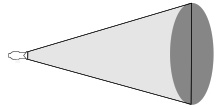
Light beam – a “cone” of light with a certain angular range (the area that is lit)
Gas-discharge lamps are a family of artificial light sources that generate light by sending an electrical discharge through an ionized gas or a plasma.
LED stage lighting instruments are stage lighting instruments that use light-emitting diodes (LEDs) as a light source.
Incandescent light bulb (incandescent lamp, incandescent light globe) is an electric light which produces light with a wire filament heated to a high temperature by an electric current passing through it, until it glows (see Incandescence).
Stage technology
Ellipsoidal reflector spotlight (ERS) is the name for a type of stage lighting instrument, named for the ellipsoidal reflector used to collect and direct the light through a barrel that contains a lens or lens train. (They have mostly two lenses which could give us a sharp light beam).
Fresnel lantern (FR/Fr/F) is a common lantern used in theatre, which employs a Fresnel lens to wash light over an area of the stage with stronger center (Light is more concentrated with more intensity in the center than on the ends).
Planoconvex lantern (PC/P) is a common lantern used in theatre, which employs a Planoconvex lens to wash light over an area of the stage with most homogenic light beam than FR.
PAR (Parabolic aluminium reflector) is a type of electric lamp, in which is the reflector included in the bulb
Intelligent lighting (fixtures) refers to stage lighting that has automated or mechanical abilities beyond those of traditional, stationary illumination.
Beam projector is a lenseless stage lighting instrument with very little beam spread (mostly they’re low voltage).
Scoop is a large, simple lighting fixture with a dome-like reflector, large high-wattage lamp and no lens.
Spotlight (followspot) is a powerful stage lighting instrument which projects a bright beam of light onto a performance space.
Color box is a tool attached to a follow spot that places different color filters in the path of the beam.
Zoom lens has the ability to vary its focal length (and thus the field and beam angles). When a zoom lens is set to its narrowest setting, the field is brighter than that of the widest setting.
Bench Focus process of adjusting the lamp socket, in an ellipsoidal reflector spotlight, so that the field of light is even, with no “hot” spots.
Striplight is a multi-circuit stage lighting instrument.
Dimmers are devices used to lower or raise the brightness of a light.
Accessories
Stage lighting accessories are components manufactured for conventional (non-automated) stage lighting instruments.
Barn doors are an attachment fitted to the front of a Fresnel lantern or PC lantern.
Gobo is a physical stencil or template slotted inside profile spotlight (between the optics and lighting source), to create the sharp picture in the emitted light.
Iris is the instrument to reduce the lighting beam in the spotlights when the optics is not able to do it more. (The same princip is used in the camera or photocamera)
Diaphragm is a thin opaque structure with an opening (aperture) at its center. The role of the diaphragm is to stop the passage of light, except for the light passing through the aperture.
Color scroller is the box with motorized strip of filters in line which are remote controlled (nowadays by DMX). It’s placed before the spotlights and change the wished color coming out.
Black wrap is a thin black aluminum plate or foil used for screening any unwanted (parasitic) light. Nonflammable material secures safety against flame when thermal light sources are used.
Maxwell disk is a simple system of two interlocking rotating disks that allow to smoothly change the area of the circular sector, depending on the kind of perception is to be achieved with additive mixing of two colors.
Color gel is a transparent colored material that is used to color light and for color correction. They’re ordered by the manufacturers (LEE filtrers, Rosco, Apollo, GEM etc.) and with numbers to be easily identifed.
Dichroic filter (thin-film filter, interference filter) is a very accurate color filter used to selectively pass light of a small range of colors while reflecting other colors. Mostly used in the intelligent spotlights.
Control devices
Lighting (control) console (desk) is an electronic device used in theatrical lighting design to control multiple lights at once.
GO is the important button of a lighting console, which triggers the automatic blending of light changes (or sequences thereof) through pre-set time. Especially by longer times, it always provides the same course and duration of changes, on the other hand, it can be perceived as mechanical, artificial, so operators often blend changes manually, which allows them to adapt the dynamics of changes to the actual situation on the stage.
Dimmer(s) is the device which feeds the spotlight with power and adjust it to required level of the light output by voltage. They’re divided to the stationary dimmers (in the buildings) and mobile dimmers (dimmer racks). Or it’s an instrument built-in of fixtures to control the lighting flux.
Channel is number of the light(s) or fixtures with which the console works and it’s saved in the cues.
Parameter / Attribute works like channel but it means on the lighting console it controls individual functions of fixtures. (Position: Pan and Tilt, Gobo, Focus, Zoom, Iris, Color mixing etc.)
Patch functionality is the most important function controling all the lighting devices. In the different theatres or venues are other dimmer numbering so for doing your show you have to assign your channels (in accordance of your saved cues) to their dimmer system.
RDM (Remote Device Management) is a protocol enhancement to USITT DMX512 that allows bi–directional communication between a lighting or system controllers and attached RDM compliant devices over a standard DMX line.
Soft light refers to light that tends to “wrap” around objects, casting diffuse shadows with soft edges.
Lesson 3
The basic types of lights
Fixtures from the technical point of view
Light can be seen as specific or general lighting. These two kinds are derived from two states of nature. The first one is of a sunny day. Then the light can be seen as specific lighting. There is a lot of contrast and there are a lot of shades. The second kind of light is the one you see at a cloudy day. This is general lighting, there are small or no shadows to be seen. Also there is not a lot of contrast.
If you look at the instruments used in theatre, this is the way of how most lighting instruments (fixtures) are designed: there are instruments for making specific lighting and instruments for general lighting. The way to create these differences in light in each fixture is the difference in: light source, the mirror/reflector and in the lens, if there is any.
Conventional lighting
In the 20th century, we started using bulbs with gas inside to produce light. To control the amount of light, a dimmer is needed. The dimmer is controlled by a light desk or lighting console. Dimming these lights will always change the color temperature. The color temperature is measured in Kelvin. A tungsten bulb with halogen gas is 3200K (Kelvin). Dimming will change the light color to a more amber color.
The most common theater fixtures are the types PC, PAR, floodlights:
Floodlights – simplest theatre light without any optics with a simple reflector and linear halogen bulb. Two basic types: asymmetrical and symmetrical reflector.
PC – a fixture with a planoconvex lens (PC) fixed with a halogen bulb, mounted onto a sliding base that allows to modify the size of the beam of light (focus). As standard, they are used with output performance of 300W, 500 W, 650W, 1 kW or 2 kW.
PAR – a basic theater fixture without optics (originally based on the design of automobile headlights – Parabolic Aluminium Reflector) with a halogen bulb, which includes glass refractor instead of optics, which determines the size of a light beam (three types: CP60, CP61, CP62). PAR lights are available in a wide range of sizes (from P16 to P64, other types in the USA when the number originally determined the circumference of the bulb in inches), for example P64 1 kW CP62 is the most common “big” PAR light in theater with a wide bulb of 1 kW output. Compared with the PC, PAR provides a completely different quality of light at the same input.
Each fixture has three qualities, which are their essential characteristics, beam angle, spill and edge quality (of the light beam).
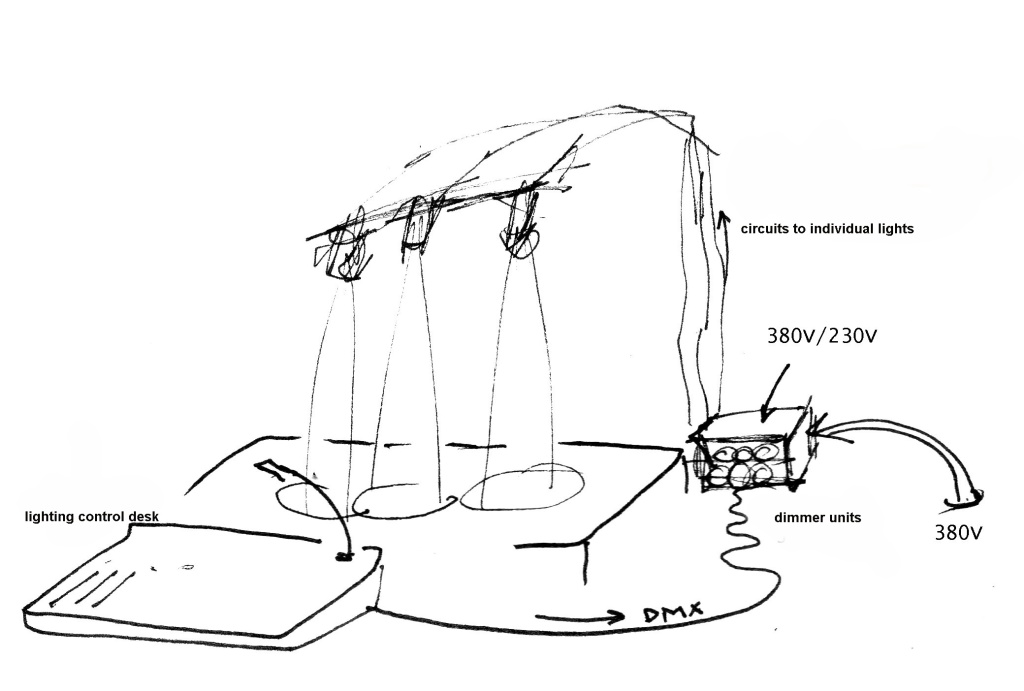
Standardized types of lights- basic types of lights, which are standardized by most manufacturers:
1. Floodlights
Floodlights are fixtures without a lens, here a reflector produces the beam. The beam angle is very wide and always fixed. The quality of the light is hard, because there is no lens in front of the source of light. The light is directly reflected against the surface. This is why the shadows produced by these kinds of fixtures are hard.

Symbol for a flood on a light plot
Genesis: they have evolved from lights that were used to illuminate the backdrops and curtains (cycloramas, hence the older cyclorama light) or to fill the stage with light.
Construction: the simplest type of fixtures, a linear halogen bulb is used as a source (most often with the capacity of 500, 1000 and 2000 W). There is a reflector behind the source, which directs the light to one direction. The light has no lens and the angle of emitted light is fixed (about 120°).
Types: with the respect to the scattering of light, we distinguish symmetric (scattering of light is the same along the axis of the bulb) and asymmetric floodlights (light scattering is not symmetric – for instance lighting of surface from the side is intended).
Properties of light: the light is ‘flat’, has no center, the light intensity is the same throughout its beam, the angle of the beam is quite large, therefore the floodlights are suitable for lighting of large surfaces.
These lighting instruments allow to cover wide angle with light and it’s determined by the shape of the reflector and the fixture itself. Usually, its main usage is for lighting of large parts of scenery as is the backdrop or cyclorama. The edge of the light beam is blurred and so several sources can be easily set one next to another to illuminate large surface, in a figurative mode of speech, to flood the surface with light.
Cyc lights
Specialized floodlights with an asymmetrical reflector are used for cyclorama lighting. They are called cyc lights. Because of their wide beam angle, they can perfectly be used for cyclorama’s. Seen from the floor, the asymmetrical reflector throws the light more up then down. That is why a cyc light can be at the border of the cyclorama. To get the same distribution of light with a symmetrical reflector, the light would have to be in the middle of the cyclorama. Of course that would destroy the magic of a cyclorama.
For cycloramas, there are specialized cyc lights available consisting of four separate asymmetrical reflectors. Three are used for red, green and blue to produce any color you like. The fourth is without a filter, to make real white and to produce color tints.
1.1.1 Scoop
Ellipsoidal Reflector Floodlight is a simple lighting instrument, which is made of an incandescent lamp that is mounted inside of a parabolic metal reflector.
It has a fixes beam angle with rather large spill and soft quality of the beam.
1.1.2 Border lights
Cyc lights are used as wash for backdrop / cyclorama providing uniform distribution of intensity. Border lights have a fixed beam angle with a rather large spill and soft quality of the beam.
2. Spot lights
Spotlights is a denomination for fixtures with a sharp beam of light. It uses a system of up to 11 lenses to acquire the best output. The angles of emitted light oscillate around 9° – 45°. Thanks to the system of lenses, these values can be easily shifted. It can offer the technology of morphing i.e. of smooth transition or blending among gobo images, prisms as a technology for dividing a beam of light into several ones.
Properties of light: spotlights have universal application, they can be focused (by adjusting angular range of the light beam), we can cast light both as onto surfaces as onto any points. A beam of light has blurred edges; it can be further shaped with the help of barndoors. In general, we use the PC, if we want to concentrate the light on a small area, the Fresnel light on larger units (compact beam without a clearer center).
2.1 PC and Fresnel
PC and Fresnel are basic types of stage lighting instruments, in practice, there is a distinction according to the type of lens – we distinguish two basic types of spots lights: PC and Fresnel
Construction: the instrument contains a simple optical system consisting of a source, reflector being located behind it and lens placed in front of it. The source and the reflector are located on a movable base, with which we can change the distance of the source from the lens, thus changing the angle of emitted light (according to the type from circa 8 ° to 60 °). A halogen bulb serves as a source, usually with power input of 500W, 1000W and 2000W. The construction of PC and Fresnel is the same, they can be reliably distinguished by looking at their lens.
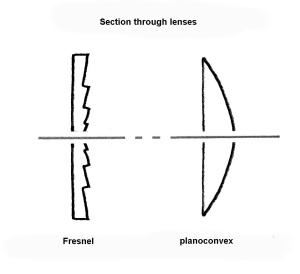
Types:
2.1.1 PC
The beam angles and hardness of different fixtures differ because of the use of different reflectors (or mirrors) or because of the use of different or no lenses. Well known is the plano-convex lens of PC. This is a fixture that produces specific lighting. The beam angle can be controlled by moving the bulb and reflector towards the lens (larger beam angle) or further away from the lens (smaller beam angle). The reflector is a spherical and the bulb is placed in front of it, in the focal point.

The symbol for a PC on a light plot.
PC is a fixture with a plano-convex lens (PC) equipped with a halogen bulb, inserted in a sliding base that allows to change the size of the focus. As a standard, it’s used with the output of 500 W, 1 kW, 2 kW.
The original plano-convex lens is a clear lens that produces typical hard light. Flat on one side, curved at the other side. These lenses are expensive to produce and had lens faults (distortion, chromatic and spherical aberration). Nowadays a PC lens is mostly a pebble-convex lens. This lens is cheaper to produce and the pebbles in the lens diffuse or soften the light. The pebbles also hide lens faults and make the edges of the light beam softer or blurred. These pebble convex lenses are also called prism convex lenses.
The beam of light of a PC is in between Fresnel and profile, it’s flatter than most of the Fresnels, but the edge is more blurred than the beam of profiles.
2.1.2 Fresnel
Another well known instrument is the Fresnel. The lens of this instrument, also called a “step” lens, is derived from light houses. Despite the housing of these fixtures can be shorter than the PC housings, the beam angles are roughly the same. But the light is more diffused or general, the edges are clearly softer then the light beam of a PC: less sharp. Changing the angle happens in the same way as with a PC fixture.
A Fresnel fixture uses a stepped lens with concentric rings, with softer light, the edges are softer and the center of the track is not distinct. It is structurally identical to the PC (a halogen bulb and reflector placed on the sliding base allowing to increase or decrease the beam of light), but with a different type of lens (named after the inventor A.-J. Fresnel, * 1788). In comparison with the planoconvex one, this is flat and contains concentric grooves in the glass. The quality of light differs from the PC in larger width of the light beam, softer light and obscured edge of the beam. It is mainly used for area lighting, colors, FOH.
The symbol of a Fresnel on a light plot.
Fresnel produces a light beam of unequal distribution with a soft edges, so the intensity decreases from the center to the periphery, the spill is quite large.
The PC and Fresnel are the most common instruments used for theatre lighting. They resemble each other a lot. Their difference is in the different lens or the size. A Fresnel has a lens with concentric circles and is shorter. Fresnel spots and PC spots are almost always used with mounted barn doors. The barn doors are used to eliminate the light from where it’s not wanted as for instance at curtains, side stage etc. Furthermore, it’s also used to get a straight line at the stage with more fixtures instead of half overlapping circles at the front of the stage.
Because of the more concentratet beam of a PC, it’s often used for front lighting. The Fresnel has a more general, more diffused kind of beam. That is why Fresnels are often used for backlighting or in other situations where the light is closer to the actors. It’s beam spreads more.
The amount of light depends on the kind of a bulb. Both types can be with a 300, 500, 1000 or 1200 Watt bulbs. There are also 2000 Watt versions of these fixtures; they are mostly used in the bigger theatres.
2.3 PAR light
PAR light, parcans (USA)
The symbol of a parcan on a light plot.
The cheapest of all fixtures is the PAR. These parabolic aluminized reflectors (PAR) are available in an array of different kinds. The most known is the PAR 64 longnose with its 1000 Watt bulb. Also known is the PAR 36 pinspot, used for mirror balls because of its concentrated beam angle of 6 degrees. Apart of these, there are the PAR 56 with its 300 Watt bulb, the PAR 20 with a E27 socket and the even smaller PAR 16. But different varieties are possible as the par 30, 36 and 38. The number refers to the diameter as in eights of an inch. A PAR 64, is 8″ wide (because 64 eighths of an inch is 8″).
A PAR is a basic theatrical fixture without optics (originally based on the design of car headlights – Parabolic Aluminum Reflector) with a halogen bulb, which includes a glass refractor instead of optics that determines the size of the beam of light (three types: CP60, CP61, CP62). PAR lights are available in a wide range of sizes (from P16 after P64, the number originally determined the circumference of the bulb in inches) e.g. P64 1 kW CP62 is the most common “big” PAR instrument with a wide output of 1 kW in the theater. Compared to a PC, a PAR provides completely different quality of light at the same wattage.
Construction: A special PAR bulb bestowed the name to the entire fixture. The filament of the bulb is of classic construction, the glass casing is formed into the parabolic shape, filled with inert gas. The back is fixed with an aluminum reflective surface. Thus the optical system is directly a part of the bulb, the rest of the fixture basically serves only as a holder of this bulb.
Types: PAR’s are produced in many variations – a number, indicating the type, means the diameter of the bulb in eights of inched (i.e. PAR 64 = 64: 8 = 8, the diameter of the 64 PAR bulb is therefore about 8 inches = 20 cm).
Properties of light: a PAR doesn’t have even distribution of light across the entire surface of the light beam, it has a distinctive bright center, it cannot be focused, the angle of light is determined by the type of a bulb. The color temperature changes in dependence on the intensity. The PAR’s are used whenever an intense beam of light is needed.
PAR’s according to their size (from the small): par 16, par 20, par 30, par 36, par 38, par 46, par 56, par 64
- PAR 16 to 38: They are most commonly produced with E 27 thread (or GU10) and are used for architectural interior lighting, they are not much used for stage lighting (with an exception of the puppet theater).
- Specific Par 36 – pinspot (lamp cap G53, 6V / 30W, the beam angle is about 5 °), low voltage is popular in the theater where is used for lighting of small areas within the scene, etc..
- PAR 46, 56 – bulbs with power output of 100W, 300W and 500W (Gx16D).
Variants are short or long (longer body of the casing, the location of the bulb is the same). The length of the body determines the beam angle.
- PAR 64 – the most commonly used PAR with power of 1000W (respectively 500W), with a lamp base GX16D, three types of lenses can be distinguished according to the size and shape of the light beam, PAR64 CP61: classic “big” PAR lantern fixed with a source with a medium narrow beam of light.
The ETC produced the Source Four PAR, in which the beam angle can be changed by replacing the lens instead of the bulb. The beam is less oval then the original PAR. There is a lot of brandless copies of these Source Four PAR’s, but with a real aluminum reflector instead of a glass, which absorbs heat.
Apart of these, there is another special kind of PAR: the ACL. This Aircraft landing light, is used a lot as effect lighting. With bulbs of 28 Volts and 250 Watts, they are mostly grouped in two 4-light source bars. That means 8 bulbs in one circuit.
Apart of fiber, a PAR lamp is composed of a mirror and lens determining the shape of the beam that is usually oval. To change the angle of the light beam, one would have to replace the entire lamp.
Profiles are usually used for front lighting (in FOH position) in the traditional proscenium theater.
The light produced by a PAR light is specific with very soft edges. The beam is more oval then round and the look of the beam is quite intense.
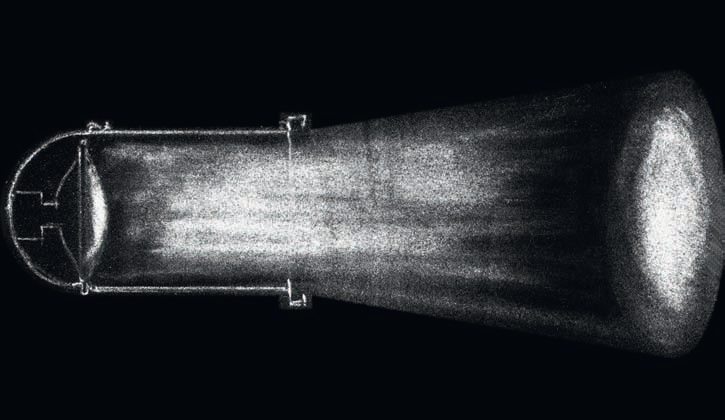
PAR
2.4 Profile spots
Apart of PC and Fresnel fixtures, profile spotlights are also used a lot. Its light is very much hard. The optical system is manufactured in the way that the beam can be sharpen. This makes it possible to project gobo’s, metal plates with a carved out image, letters or forms. Profiles are also equipped with framing shutters to shape the beam into such forms as rectangles and triangles. They can also be used in the same way as barn doors of a PC or Fresnel.
Profile is a type of a spotlight with the same optics and qualities; however, carving blades for modeling of the light beam are added. The instrument can be used for very precise lighting. That is very beneficial in theaters, where it isn’t necessary anymore that hundreds of reflectors would be focused, but it is very well manageable with high precision from a lighting console. The blades can move very quickly and so a wide range of effects can be achieved that can be intensified by mist at the stage.
It is a type used a lot in entertainment industry as in concerts, TV shows as a simple type of light and its main purpose is to produce the strongest beam in the most narrow angle as possible. Spotlights can produce lowest angle available of 9°- 10° when the size of a beam would be 3,5 m in the distance of 20 m. With a help of an iris, it is possible to reduce the angle of light from 10° to 1°, but only with considerable loss of intensity and so all the functions would be blocked to be used in full quality. A beam of light reaches angles of 1° to 10°. The angles are achieved simply by modification of the beam through lenses. It is not a bargain for theaters because of ratio between the price and usability, whereas firms that produce concerts would have many of this type.
The symbol for a profile on a light plot.
Profiles can have one or two moving lenses. With one moving lens the beam angle is fixed and can be from 10 degrees up to even 90 degrees (Selecon Pacific). The moving lens is to sharpen or to defocus a beam. Zoom profile spots have a second moving lens to change the angle of the beam. In general, most zoom profiles come in two types: narrow (approximately 12-28 degrees) or wide (approximately 22-42 degrees). Different zoom angles are possible too.
There are two different types of profile spots: ellipsoidal profiles and condenser profiles. The back of a condenser profile looks a lot like the PC or Fresnel. It also has a spherical reflector and a bulb in front of it. The most important difference is that the reflector and bulb don’t move. The beam is changed by means of moving the lenses, not by moving the bulb.
In the condenser profile spot, the condenser contains a third extra lens that spreads the light equally. This lens is located in front of the framing shutters and the other two lenses. By distributing the light more even, there is lesser chromatic aberration and there are fewer hot spots. The more even distribution of the light makes gobo’s look better. There is less difference in the amount of light between the edge and the center of the beam.
The ellipsoidal profiles don’t have a condenser lens or spherical reflector. The kind of a reflector is the biggest difference. The bulb is in the middle of a parabolic or ellipsoidal reflector. This means that all light emitted from the bulb is reflected through the lenses. This is contrary to a spherical reflector where a lot of light is spilled in the housing.
A characteristic of an ellipsoidal reflector is that there are two focal points. The filament bulb is in the first focal point of the reflector. The other focal point is just in front of where the shutters are located.
In the last two decades of the 20th century, the development of these ellipsoidal fixtures has improved a lot. The reflectors can reflect the visible part of the spectrum better. This is done without reflecting all the heat that is the infrared part of the spectrum. It absorbs it in a kind of way. This could be done with knowledge coming from the space industry. This is why this type profile spots with this type of ellipsoidal reflectors are called cool beam spots. Also the bulbs are constructed with extra heat sinks to transfer as much heat as possible to the back. Heat sinks at the outside of the housings of these profiles increase the surface. This is to transfer as much heat to the air as possible as well.
Ellipsoidal spots existed already in the 1920s. Typical ellipsoidal fixtures are the Leko of Strand Lighting or the Source Four profiles of ETC.
Because of the lenses used, profile spots can throw the light much further than a PC or Fresnel. That is why they can be used for front lighting at large theatres or venues. Follow spots with a discharge source of light are actually big condenser profiles. They can be far away from the stage and still produce a sharp beam.
For condenser profiles, bulbs of 1000, 1200 or 2000 Watt are used. For ellipsoidal profiles different bulbs have been developed. These bulbs differ from 575, 600 or 750 Watt. A 575 or 600 Watt ellipsoidal profile can be compared with a 1000 Watt condenser profile.
3. Other types of lights
(Properties of instruments differ according to a manufacturer, determination of the used technology and quality. The following list is not typologically uniform.)
In addition to these basic conventional lights especially in music productions, more variable instruments are commonly used today that are not connected to electrical dimmer circuits and are directly controlled by DMX commands.
3.1 Low voltage
There is a transformer in front of the lamp, which regulates el. current from 230V to 6V, 12V, 24V, etc. The source is a low voltage bulb, but it emits an intense, but narrow beam (about 5°). The low voltage are some PAR’s (pinspot, ACL), further low voltages are often a part of the battery (the legendary Svoboda battens), and also DPR 250W by the company Artlighting.
3.2 Fluorescent
Lighting by fluorescent tubes. Problematic dimming technology has limited its wider distribution. Currently, there is large popularity of fluorescent light thanks to the cold spectrum of the quality of light.
3.3 LEDs
LEDs (Light-Emitting Diode) are a promising source of light in all regards of its use because of its features (low energy X high performance, long service life, a wide range of colors and combinations, manufacturing cost etc.). Development of LED technology is so dynamic that the lights fixed with LEDs penetrate through previous typologies and their properties depend very much on the level, construction, technology, manufacturer or purpose of the light.
LED instruments, non-motorized (PAR types, flood), usually mounted with LEDs of three colors (RGB *) with integrated dimming module, enabling the creation of a variety of colors from a single instrument.
Advantages of LED technology contain low power consumption, long durability, high luminous output and very low heath radiation. So far, its relatively expensive.
3.4 Lasers
The laser beam has specific properties for theatrical lighting and is not yet a very common source of light, it is used mostly for effect lighting.
3.5 Projectors
Wide possibilities for stage lighting are available with lighting using slide projectors, video projectors. A video projector isn’t used only to project pictures on a screen, but more often it appears as a source of light in theatre. Projections are used to complete the set design and it often replaces the lights in a dance performance.
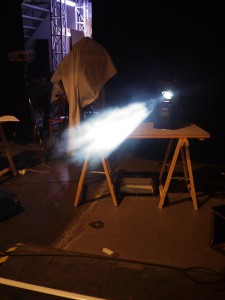
3.6 Moving heads
(Intelligent lights, automated lighting, moving lights)
In the 1980’s, many lighting manufacturers started experimenting with ways of moving the light. A moving mirror at a par can was one of the first. This way of moving the light was developed as a range of lights called scans. The Golden Scan of Clay Paky and the Cyberlight of High End are the most known. The Cyberlights have been used till in the first decade of this century. They had an amazing output and great gobo’s.
The essential feature of automatic lights is the fact that they can move. They can execute a certain amount of inclination degrees (TILT) and certain number of rotation degrees (PAN). Movable lights are usually equipped with an integrated (removable) range of gobos, filters and mirrors. They are connected to a 240V power source of electrical energy; all control is via DMX interface.
Structurally very complicated mechanic allows real-time changes of a range of parameters – the size of the beam of light, sharpness, color and directing of the light beam in the X-axis (pan) and Y (tilt). They can be mounted with lamps (most often), but also with bulbs or LEDs. Different types can contain other modules as gobos, rotating gobos, etc. Since all parameters are controlled by a mechanical motor, moving heads are noisy to a considerable extent, which is a handicap in the drama theatre.
Moving heads are destined for dynamics. When the location is well chosen, their light beam reaches almost any place. They might be equipped with rotation gobos, which can divide a light beam into three and focused on a larger area in such a way. This effect is used for induction of shadows of trees or flowing water. When used with steam or smoke, light trails can be drawn in the space, which is commonly used at concerts. Many intelligent lights can mix colors up to theoretically unlimited variety, although the actual use is limited by many factors. Lighting consoles can adjust the colors with setting of shade and saturation. Dichroic filters are used in many intelligent lights and are made of heatproof glass that is covered by a thin layer of material. They allow some frequencies, but instead of absorbing other, they reflect them.
The other way of moving the light was to move the whole fixture or the head in a yoke. These were called yoke spots. These kind of spots have a wider range then the scans with a moving mirror.
Yoke spots are more difficult to control. With the pan and tilt and the fact that moving lights can turn around more than 360 degrees in pan you can reach any position on stage in different ways. Moving the pan right or moving the pan left are already two ways. Yokespots are nowadays used more.
There are two types of movingheads :
A) spot (PC optics, narrower, sharper light beam) and
B) wash (Fresnel optics, wider, more diffused light beam).
Moving heads can be further divided in several ways.
- those that have a movable mirror in front of a solid body.
- those where the entire lamp or head moves with the help of a motor.
Or
- hard edged light – it has a similar optics as the traditional profile reflector, it can be used with gobo.
- wash – it uses similar optics as PC and Fresnel for creation of large color surface.
There are several ways of how the device can change its color, depending on time delay as it can be rather rapid or gradual. For rapid changes, a disc with glass filter with two colors inside is used that can be inserted into the light beam with a remote control or a color scroller can carry out a similar change from the outside.
These devices can perform a continuous change of colors using glass filters of two colors in combination of three basic colors – cyan, magenta, yellow (CMY).
WashBeam is a hybrid type of automatic lights and so might behave as both the types. A lighting designer can use the same device to produce different effect and thus save not only time, but resources as well.
DigitalSpot is an original combination of projection technologies and intelligent lights. For instance DigitalSpot 7100 DT contains digital projector and two fields of high-performance RGBW LED diodes. The projector has the luminosity of 7000 ANSI lumen and each LED field contains 48 powerful LED diodes of radiance angle of 25°. The device is controlled by a computer, which is a part of its controlling unit and offers basic functions of a media server as video and image layers, masking etc. with a library of digital gobo images and videos with a possibility of creating them.
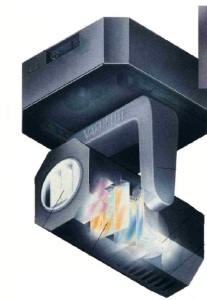
WASH head Vari-lite VL3
4. Effects lights
A category of lights with high and fast real-time on dynamic of changes in focus, color, shape, sharpness, etc.. It is used for lighting effects either in the theater or events. ( types: Scanners / Scans, blinders, strobes / strobe, movingheads etc..)
Some types of light sources according to the mode of common usage:
4.1 Followspot
A followspot is a type of an instrument that is constructionally very similar to a profile – it has at least one movable lens, which enables to focus the light beam, its size is relatively small because it is used for following actors from a distance. By the default, it is fixed with an iris diaphragm, and optionally with a set of telescopic colored glasses or its own dimmer. The source may be a halogen bulb, but it’s a discharge lamp more frequently (for the followspot, large luminosity is often needed, it is used to cast additional light onto the soloists in the surrounding light situation).
A followspot is then an instrument placed on a tripod in a suitable position, manipulated manually by a stage lighting worker, intended for direct spot lighting of a moving actor in the case when it is necessary to highlight him in contrast to the surrounding light atmosphere.
4.2 Pinspot
– the name derives from a very narrow light beam (3 to 5 °), the source is a low voltage lamp (characterized by colder light quality).
5. Sources of light
Until now, we explained what kind of light the different fixtures make with different reflectors and mirrors. But there are other properties that influence the light as well. As much as conventional lights and moving lights concerns, there are 3 controllable properties of light: the quantity of light (the number of sources of light or the amount of light you need), the color of light, the distribution of light (the way which light of any quantity is spread and distributed over the acting area).
Since the 80’s, the majority of conventional light used Tungsten light sources. The color of these light sources is a kind of warm, more yellow or red than there is blue. To dim these light sources, there are separate dimmers needed. When dimmed, their color temperature gets lower. That means the color of the light gets warmer, or more red. Light designers do play with this.
This also means that the color of filters also changes when dimmed.
Most moving lights were using discharge light sources. Though there is a lot of moving lights with a tungsten light source. The good thing about discharge light sources is that they produce less heat. The bad thing is that they can be dimmed like a tungsten light source. Shutters are needed for diming discharge light. This is a kind of an iris in the unsharp part of the lens system. This means that the color temperature does not change when you dim them. The color temperature of a discharge light source varies between the 5000 and 7000 Kelvin. This means that there is a lot of blue in the light. It looks a lot like normal daylight.
Most moving lights have a correction filter called CTO (change to orange) to imitate the color temperature of a tungsten light source. So if you use them together, you can adapt the colors. Of course you can change the color temperature of a tungsten light source with a CTB filter (change to blue), but that is more work.
Since the upcoming of the LED as a light source, more and more moving lights have a LED light sources. The transition in the conventional lights from tungsten to LED is happening more slowly. Only for par cans, the change was fast, but mostly not in theatre lighting. Though many brands offer a LED to be in Pc’s, Fresnels and profiles, they are not used as much yet. Also tungsten par cans are still used a lot.
A LED light source also doesn’t dim in the same way as a tungsten source does.
Most of the fixtures use bulbs. Light is thus generated by heating a tungsten filament in a bulb from quartz glass being filled with a halogen gas. When a thread is under voltage, wolfram heats up and emits light. The quality of light very much depends on strength of voltage, released into the bulb. Thus it is technically rather easy to control the level of electric current going through the filament. And it’s possible to manipulate the desired color atmosphere on the stage by allowing more or less electrical current into the circuit as if only a small amount is let into the bulb, the white color that will be emitted in any level of the current will contain different color components that together create the white. Human mind perceive the light of smaller current as warmer as its white color contains more of red and less of the blue color. The stronger the current, the colder would seem the white light to a viewer’s eyes as there would be more blue and less red color.
Artificial light sources
The list of light sources could start by the fire and candles. Nowadays in lighting technologies, we’re mostly using the electric light sources. That is the bulb, fluorescent, discharge lamp and latest LED (Light Emitting Diode). They are different in the regard of emitting different spectrum of visible light and non-visible light which is transformed to the visible spectrum. They produce different types of wavelengths of the color spectrum. This is caused by the principles of their functionality and also by their chemical base. In the stage lighting (and film as well), there are used these types of artificial lighting sources:
A tungsten bulb works on the principle of heating of a thin wire, usually of wolfram, by electrical current that flows through it. It contains almost the entire spectrum of visible light. The most distinctive are the wavelengths of yellow and red of the spectrum, blue and ultraviolet ones are completely absent. A bulb remains a cheap source, but its disadvantage is high heating value as the majority of energy is emitted in the form of infrared radiation. It’s used in old historical spotlights, chandeliers, small lamps etc.
A halogen bulb is of a similar construction and functioning as a common bulb (tungsteen bulb) with a difference in the content filling gas, which contains admixtures of halogen gases as bromine, chlorine, fluorine, iodine and possibly others. Used in: in some cases as tungsten bulbs and in PC, Fresnel, Profiles, PARs, some type of the fixtures etc.
A fluorescent light source is used in schools, offices, factories. In comparison with ordinary bulbs, it doesn’t emit heat and so it produces cold white light. Light spectrum of a fluorescent lamp is rather deformed as it lacks especially sections of red and blue violet spectrum, those that are the most strong in the natural light. There are these types of fluorescent lamps: linear tubes, energy saving lamps, compact fluorescent and so on. Used in: the specific lighting luminaries, table lamps…
A discharge light source is based on the gas heated by the electrical current in a transparent container. The current makes the gas glowing, creating strong intensive and stable light being closer to the cold colors (cool white). There is a lot of different types (high-pressure, mercur vapor, sodium vapor, ceramic and so on). The advantage is not only strong light but also big power efficiency (more than bulbs and fluorescent, less or similar as LED). The disadvantage is that they’re not dimmable (in some cases only to 70%) so the dimming of this sources is done by mechanical dimmers (barn doors, shutters etc.). Used in: Mostly in the fixtures as moving heads, scanners, followspots, strobo…
LED (Light Emitting Diode) works on the principle of electroluminescence of semiconductor materials. Light emerges on a basis of transitions of electrons from higher energetic levels into lower ones. Here, rather large efficiency is reached in transformation of electrical energy into the light. LEDs are rather expensive, but with long duration and have high chromatic temperature so there is a large portion of wavelengths from the blue section of the spectrum. Used in: RGB mixing fixture (PARs, Strips or Bars…), moving heads, and in these days, it’s used as substitution for a whole range of the lighting instruments.
6. Auxiliary tools
6.1 Dimmers
Dimmers allow changing the intensity of the luminous flux of sources of light.
Dimmers are connected to the three-phase current source (380V) that is regulated and led directly to the individual lights from individual channels.
We discern between stationary (built-in) and mobile (portable) dimmers according to their location in the theater.
Type designation of dimmer units typically contains two numbers (format: number / number), where the first one indicates the power input of one circuit and the second one the number of circuits. (Example: 2/12 = twelve independent circuits with the individual performance of 2kW per circuit) The number of circuits indicates how many instruments can be independently controlled. Power of a circuit indicates what maximum performance we can connect to the circuit (one fixture or several – performance adds up).
The most commonly used power values of dimmers and possibilities of wiring of lights:
| Power | connection examples | ||
| 1,2kW | 2 x 500W PC or 1 x 1000W PC or 1 x 1 000W par 64 or 3 x 300W par 56 etc. | ||
| 2,3kW | 4 x 500W PC or 2 x 1000W PC | ||
| 5kW | 4 x 1000W PC or 2 x 2000W PC etc. |
6.2 Lighting console
Lighting control desk, console, board
It is used to control the dimmers. Lighting consoles are basically divided according to the output signal into analogue (0-10 V) and digital (protocol DMX).
An analog lighting console – entering the output values of the circuit is served by the auxiliary voltage (range 0-10) that is directly adjustable by a tension potentiometer on the console. Each circuit, controlled by analog lighting console, must have its own conductor between the console and dimmer. Such a kind of a solution is now obsolete and not used.
A digital lighting console is basically a computer that communicates with the dimmer units via the DMX 512 protocol, which is a serial digital protocol that can transmit up to 512 parameters at once. The protocol DMX 512 is a worldwide standard, which can also control other device with DMX.
Basic parts of the control desk:
1) (alpha) numeric keypad – allows activation of individual circuits, setting their intensity, saving a program
2) submasters – a programmable field of faders
3) Crossfaders, cue buttons – faders or buttons that enable controlling the program during a performance
4) grand master – Sabre (GM) or button (BO – BlackOut) control the overall output intensity
6.3 Accessories
Conventional instruments have a variety of accessories, which allow improved use of their potential. The most important are:
6.3.1 Barndoors
Four tin sheets allow confining a beam or reduce stray light. They are most commonly used in types as PC, Fresnel, but exist for the PAR and floods as well.
6.3.2 Shutters
In profiles, there are blades, with which the light beam can be cut into a certain shape (according to the number of blades). The term is also used for the shutter in front of the lens of the projector.
6.3.3 Gobo
– Gobo (go before the optic):
A steel or glass template that releases light in a certain shape or pattern (bitmaps, texts, geometric shapes, trees, etc.). A steel gobo is carved, glass gobos are printed, and can be colored. Gobos are used in instruments with adjustable optics (profiles) that allow focusing the shape. Some fixtures offer rotary gobos – the shape can rotate at the desired speed.
6.3.4 Iris
An Iris is a mechanism that allows reducing the light beam by its mechanical closing, reducing light output (as opposed to “zoom”, where the beam is reduced by movement of two lenses in relation to each other). An Iris diaphragm with blackout enables closing a light beam completely (used in followspots). In other words, an Iris diaphragm enables changing the angular range of the light beam.
6.3.5 Filters
Special heat-resistant foil fixed in front of the lens allows adjusting the light beam with a wide range of colors or modifying its color temperature. Filters with enhanced heat resistance are called HT (high temperature). Specific filters of the “frost” type are used to achieve the desired dispersion of the light beam.
Lee Filters is an established manufacturer of color filters and corrections for theater, film and photographic lighting. The complete range of filters is always clearly marked by a three-digit number (introduced with letter “L”) and the name of the color or correction (e.g. L141 Lee fluorescent 5,700 K – correction filter of a tungsten source for cold fluorescent temperature of 5700 K / daylight, L245 Half plus green – no correction filter, so it doesn’t state the chromatic temperature, it is used to add a green component). More at www.leefilters.com. There are other manufacturers (Rosco, GammColor) with their own product series and titles. However, a three-digit number is used among all of them.
Examples:
Lee 202 – ¼ CT Blue: a numerical designation of a filter by manufacturer Lee filters, CT Blue – “color temperature blue”, this is a correction of a tungsten source to the daylight temperature, in this case by the value of ¼ CT Blue (Lee 200 – full CT Blue, Lee 201 – ½ CT Blue)
Lee 242 – 4300 K fluorescent: a numerical designation of the filter by manufacturer Lee filters, here with tungsten correction of the source for fluorescent temperature of 4300 K.
6.3.5 Scroller
Scroller is a type of a color changer. It is a mechanical device for rewinding filters that is fixed in front of the optics of a conventional fixture, being controlled by a DMX command, it can change the color of the beam.
6.3.6 Tripod
A classic three-legged stand is used for placing the instruments into a position where there is no suspension point available. It can be complemented by a “T bar”, and thus carry more fixtures. The telescopic extension of the tripod is variable according to the type but typically from 1.5 to 6 m.
6.3.7 Floorstand
Allows to securely fix the direction of the instruments, placed on the floor.
6.3.8 Tower
(Ballet tower)
A ballet tower is a telescopic cubic structure with standard height of about 2 m and with a possibility of further extension, which can carry several instruments, one above the other, which allows the use of different angles of the light beam, and is thus more practical than the traditional tripod.
6.3.9 Show foil
A Show foil is composed of a special material with certain specific light transmittance and reflective qualities, permitting lighting through or projection both from rear and front.
Tasks
1.
Consider how and with which device you would create these effects:
2.
Study first simple than more complex lighting parks of the theaters you go to. Remember that there are large limitations concerning multitude of lights that can be mounted onto positions as fly system bears also other parts of scenery and equipment. Similarly, in large theaters, the lights are usually fixed to their positions and only a part of them is used for actual performance. Now, in a small theater of variable space, it is quite possible to determine their lighting park.
Such information could be available at the web page of the theatre, by studying the condition before you enter the performance, you may try to determine, which sources are employed.
Case studies
1. Archa Theater
In 2015, the lighting designers of the Archa Theater can operate this group of lighting instruments.
60 × PC SPOTLIGHT 1000 W + barndoors
20 × F SPOTLIGHT 1000 W barndoors
40 × PC TEATRO 1000 W barndoors
16 × F TEATRO 1000 W barndoors
16 × PAR 64 1000 W CP 60
16 × PAR 64 1000 W CP 61
16 × PAR 64 1000 W CP 62
5 × PAR 36 50 W 12 V
8 × PAR 36 75 W 230 V
12 × PINSPOT 35 W 6V 4°
44 × CANTATA STRAND 1200 W 26°/44°
14 × CANTATA STRAND 1200 W 18°/32°
20 × 613 SX ROBERT JULIAT 1000 W 28°/54°
2 × TIPO TEATRO 1000 W 15°/28°
18 × MINI IRIS STRAND 1000 W asymetrical
18 × CODA STRAND 1000 W asymetrical
6 × CHR 500 W symetrical
8 × PUNCH LED Pro American DJ
2 × EXPLORER ULTRALITE 1000 W followspot
1 × HMI TEATRO 1200 MSR followspot
8 × FRESNEL 2000 W barndoors
4 × Stage Light 300 Clay Paky
6 × Striplights SunStrip
Accessories
4 × tripod ULTRALITE U 070
4 × tripod ULTRALITE U 087
10 × tower 40 – 240cm (max. for 5 lights)
1 × hazer JEM ZR 24/7 DMX
1 × smoke JEM ZR 33 DMX
1 × smoke MARTIN Magnum Pro 2000
2 × ventilator Digifan 1200 W DMX
Dimmers
204 circuits 2 kW
6 circuits 5 kW
Lighting konsole board
STRAND 530 30 submasters
STRAND 300 72 submasters
grandMA2 ultra-light + fader wing
2. Alfred in the Courtyard Theatre
In 2015, the lighting designers of the Archa Theater can operate this group of lighting instruments.
Lighting board
MA2 on PC faderwing
Eurolight Scenesetter 24/48
Dimmers
18 x 2kW
24 x 3 kW
6 x 2kW mobile (small stage)
PARcans
6 par 64 CP61
6 par 64 CP62
7 pinspor par 36
2 multipar ETC 500W
Floodlight
10 flood 500 W + 150 W
2 flood 1000W (asymetrical)
PC, Fresnel
20 FHR PC 500 W + barnodors
4 FHR PC 1000 W + barndoors
2 Starlette PC 1000 W + barndoors
2 Fresnel 1000 W
2 FHR PC 2000 W + barndoors
Profile
2 profile Teatro 650W,
3 profile ETC S4 (2x 36°, 1 x50°)
4 profile ETC S4 Junior Zoom (25°-50°)
Accesories
4 stand (T bar)
4 floorstand
4 side toner
3. Light in the dark
When we speak of a discipline of “magic with lighting “, when individual images should be carved out of the darkness, be connected together and completed with movement of lights (dimming and fading in) and support the plot of the performance; all performances have a story, even the totally abstract and sensual ones. In this type of work, it is necessary first to create darkness, which is not easy.
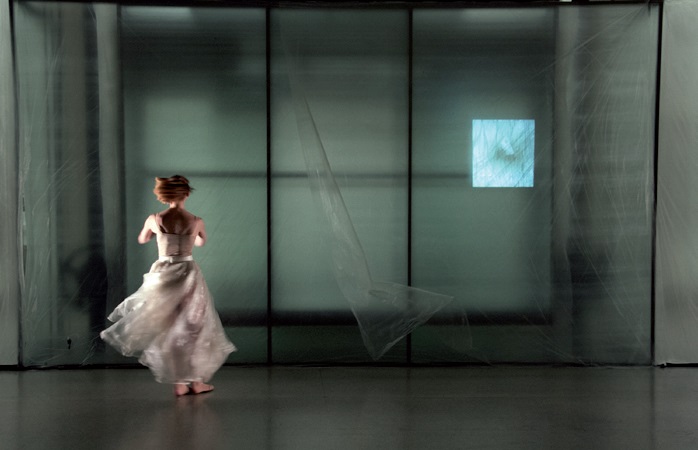
The foyer of Modern Art at the Trade Fair Palace, performance Flashback. Thin polythene was attached by a tape to the glass wall of the elevator. Two ground profile lights were used being focused against each other at the left and right at the edge of the stage – they are perceivable at the sides of the dancer. In the rear section behind the lift, there are fluorescent lamps that were opening up the depth of space. A small light window on the right side of the scene is projection – a projector is placed on the ground in front of spectators. In the small window, there are moving images, which bestow another dimension to the scene.
Stray light
In the professional sphere, there is virtually no space where the darkness would be made after switching off the working lights. Maybe it is just a momentary illusion, but one will find after a while that the area in front of him reveals itself gradually more and more from the seeming darkness. It’s caused by unwanted stray light, but mainly by lighting from the security plates “exit”. On this ground, there comes a clash between lighting designer and technicians as the designer requires switching off, respectively considerable diming of the “exit” lights, proposes various improvements and filters, but encounters relatively strong opposition that usually ends in a compromise, where he achieves to fix the light with a darker filter and the “exit” is glued with barn doors, made of black wrap, so that stray light is blocked towards the stage, while the sign is visible within the viewer sight. However, the “production” of darkness doesn’t end with this. Now, it is the turn for various LED lights on machines – the projector, the amplifier, the mixer, etc., etc. These little lights combined create a light ambience, and if a character moves around the stage in a white, it’s guaranteed that will be visible “in the dark”. Another source of unwanted light are dimmers with series of diodes that need to be lowered. If there isn’t such a function available on the dimmer, it is necessary to simply cover them with black gaffer tape (adhesive tape with fabric basis).
Further, a work lamp of a lighting designer has to be dealt with as casting too much of light in most of the cases and sometimes throws light into a part of the auditorium, which is absurd, but mainly: light from a lamp distorts the sight of the lighting operator. His eyes, pupils, adapt to light from it and he is not able anymore to perceive the intensity of light in the same way as a spectator, sitting in the dark auditorium and with no lighting towards his eyes. This concerns the manual handling, when the lighting operator controls the intensity of the lights manually, live, not with a ready program, and therefore needs to actually see what reveals itself in the scene. As one of his tasks, a lighting operator is responsible for creating the darkness in the space. It needs to be achieved by all means, even with troubles, when it is the case of a touring performance, with local technicians, who are not happy to have any changes around.
As much as the lighting instruments concern, there is one possible simple device that is available -bulbs: Bulbs are light-weight, and therefore they are nice to be worked with and are convenient for an independent style of work with simple lighting design in the style of “Omnia mea mecum porto” – I carry everything mine with me. For this approach, a portable twelve channel dimmer Minor (1000 W per channel), which can be also easily programmed and can be plugged as into a three-phase of 400V socket as into a simple socket of 230 V with a help of a reduction.
Apart of classical 60 W up to 200 W, there is available for instance PAR Philips 150 W, which can be used as a spot with a narrow light beam or for flood lighting with a wide beam. It is a solid, thick-walled glass bulb with an ordinary thread E27, which has an interesting aesthetic impact, when it is hanged and tightens well the electrical wire because of its weight and that is also a component of visual perfection. Small bulbs of 15 W up to 25 W are reasonable for creation of an intimate atmosphere.
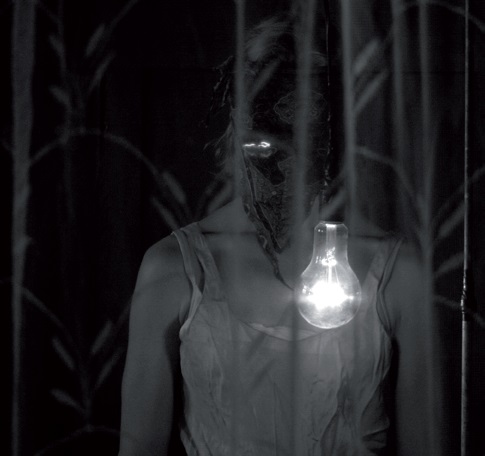
The workshop Layers. It shows experimenting with lighting of a minimalist movement etude only by a single dimmed bulb of 200 W. The scene consisted of several layers of fine small curtains. A dancer created movement improvisation on the site only by her arms, her face was covered with a scarf and intuitively responded to gradual changes in lighting intensity.
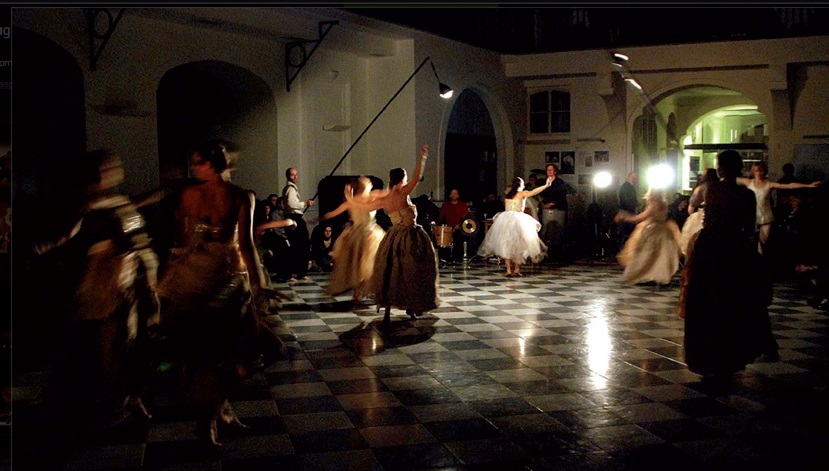
Performance Dance of Paper Dancers in the Czech Museum of Music. Here are the portable lights “porta lights” used – bulbs are suspended on poles and plugged into a dimmer. They are carried by dancers who simultaneously move with the main dancers. As a result, the whole scene is in constant, sometimes even chaotic movement. The sound of live percussion is complemented by rustle of dancers’ paper dresses.
Portable light
For alternative projects, portable light can also be used. A bulb in a socket can be inserted into a short handle. It may be made e.g. from a thick paper tube. A switch or common room dimmer can be incorporated into the handle, so the operator of this device himself can switch on or dim the light. The length of the wire may be between 8 to 10 meters and made of rubberized twin cable, which has a considerable weight and doesn’t tangle.
Another type of portable light might be a bulb on a rod. The principle is similar – a rod is used with the length of 3-4 m, preferably lightweight aluminum or telescopic (it is used on a paint roller), which is fitted with a bulb in the socket and it is left to be freely hung for about 70 cm. The twin cable is connected to a dimmer, so the technician has the control of the light. It is necessary that the carrier of “light” would be a physically able man, because he would be moving around with a dancer in a certain distance. If the carriers are dancers as well, that could be a large advantage as they might handle the light skillfully and sensitively. If the dancers are followed by these portable lights that work as washes from above and thank to the fluctuation of bulbs, also the shadows get moving and the figures of dancers were lit fragmentally and that might have a very dynamic effect. If these portable lights are connected to a dimmer, furthermore the intensity can be regulated and thus the overall scene.
There are many creative possibilities of using portable lights in the context of site specific and everything depends on invention and sense as of the lighting designer as of performers and dancers who use the light. The bulb might be fitted with various improvised filters as for example with a crumpled paper, which add an organic texture to it (naturally it’s necessary to be careful that the paper wouldn’t touch directly the bulb, although the bulb can be wrapped in paper for a short periods of time without being dangerous). It is possible to swing and turn with the bulb and create “dance of shadows” in such a manner, to hide it in a pocket or to direct the “spot light bulb” towards a small reflective surface such as a aluminum coaster and to create an effect of light reflection on a water surface by its vibration.
The possibilities are endless, there is only needed a larger dose of playfulness and not be afraid to experiment. The creation of lighting design is a totally unique discipline for open space or site-specific, which cannot be black out, and in which there is a natural ambient light “in naturalis”. Such a space can be e.g. a gallery.
When creating the lighting design in a site-specific environment, it is always necessary to think how to simplify everything. By bringing the heavy technology including tripods, suspension truss system, dozens of lights of all kinds and kilometers of cables and badly located and needlessly strong technology, the output effect can be the destruction of purity and genius loci of the space. At the same time, the outcome of such endeavor is not interesting in any regard and only standard components of lighting composition are applied. And so the concept of lighting design for an abstract type of an alternative performance should be based on the principle of simplicity and playfulness.
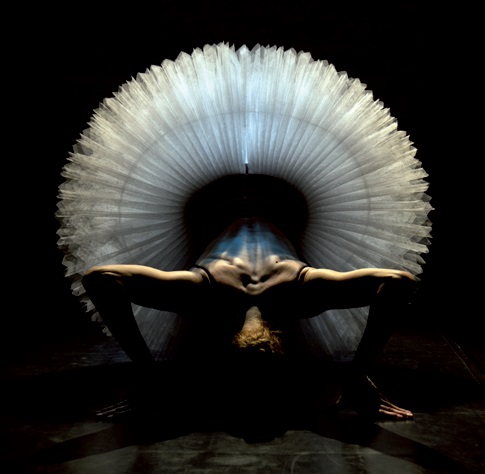
The performance the Dance of a Magnetic Ballerina. There is one PC 500 W positioned at the height of 2 m on a rack in the background of the scene as backlighting with the focus adjusted to the size of a ballet skirt and a filter L117 (Steel Blue). The second light is formed of a hanging bulb of PAR type 150 W Philips, used as wash – it casts light on the upper part of the body and arms. It is on 30% of its intensity at this photo.
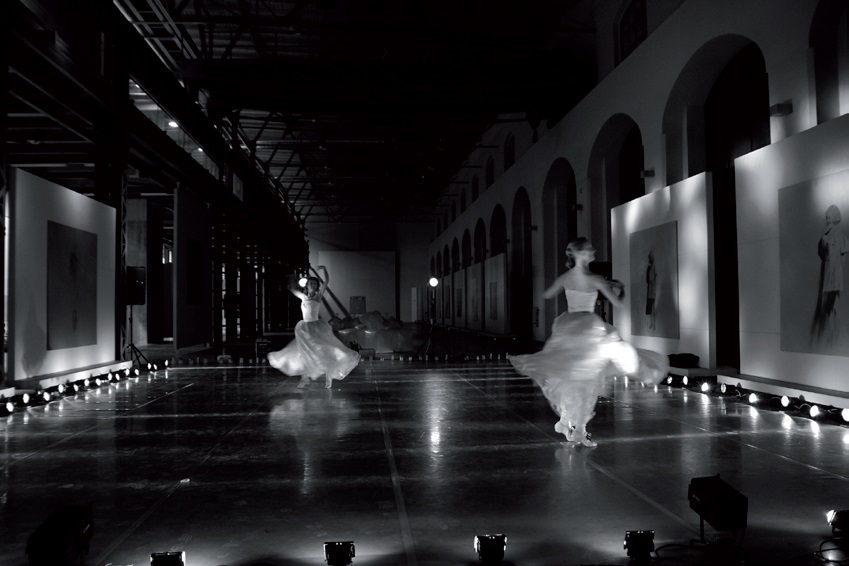
The Gallery of Modern Art in Brno – ongoing rehearsals of a performance (The Baroque Body Revealed) that took place directly in the exhibition hall. On both sides of the stage, there are placed series of pin spots (they were all connected together to one channel), a number of floods 150W at the forefront (also connected together), and PCs of 500 W are set in the background on small, 2m floor stands. The environment of the gallery, including the paintings, forms and strengthens the overall impression from the scene.
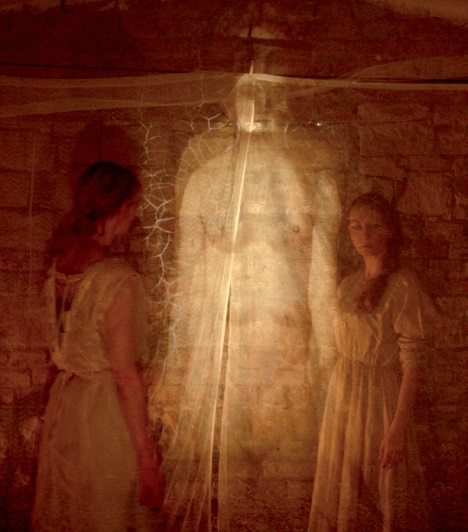
Performance Acts and Ways. Movement and dance performance to the music of Alfred Schnittke was very simple from as much as lighting design concerns. It was a combination of projection slides, two bulbs and two 500W PCs with barn doors located on the ground: the stage design consisted of two curtains, between which there was a corridor of about 1.5 m where performers were in motion.
4. Technological theater
One of the key attributes that is essential to the contemporary art is interdisciplinarity. But a field that could be named “development and research of technological devices for the needs of scenic art” has been accompanying the theatre from its beginning. However, interesting changes came about in the recent period of time. Scientific teams in their laboratories have been replaced by amateur enthusiasts, DIY (do it yourself) men and artists. Scientific theses and hypotheses have been substituted by blogs of DIY fans, complex measuring devices have been replaced by small and cheap microcontrollers (Arduino etc.) The progress in this field is pushed forward by teams of artists (performers, dancers, digital media artist) and technicians (designers, developers, programmers). Commercial sphere reacted to the contemporary trend and started offering components directly for extension of these development platforms – see for instance web portals Adafruit, Sparkfun and other. Programmers were focused on the so called open source, which is programs where it’s possible to individually adjust their content and so their function as well.
Theatre in the wider meaning of the word offers an ideal platform for research and development of proceedings without the necessity of their application in the real life. As the phenomenon of the present day, there are for instance interactive technological sets, which produce interesting results in performative art in the hands of artistic community of DIY. Three such events that took place only recently may serve as an example. All are interesting from the aspect of use of new technologies and they convey an interesting art and social characteristics. Each of them has its cultural background in a different field, however, all represent the contemporary DIY movement, connecting art and technology. But their common ground is always light.
1. Biosensors
The workshop Biosensors and Lights in Dance took place within the Signal festival in Prague in 17th and 18th October of 2014. Its aim was to explore the possibilities of directly controlling the light with the help of biosignals. Biosignals, which are directly related to movement or dance (breath, pulse, muscle activity), are in themselves an incentive for employment at the stage. To adapt another layer of real being of a dancer is a beautiful art task for art. Lectors Mária Júdová and Jonáš Svatoš have been exploring this field for some time and the workshop was a kind of a practical presentation of their endeavor.
At the first day of the workshop, the participants assembled prototypes of biosensors and prepared control of scenic LED lights via protocol DMX in such a way that it would react in the real time to biosignals, which were retrieved from the body by sensors (heart pulse, muscular activity). Although the block scheme appears to be simple, starting up the system was demanding even for experienced lecturers. Jonáš Svatoš prepared patch v Pure Data environment (reprogrammed module in development software environment) where the values of biosignals were transferred to intensity of light from LEDs. For this purpose, the participants of the workshop made a converter USB/DMX from development board Arduino Uno.
The second day of the workshop was dedicated to tuning of the system and preparation for the evening when the outcome was presented at the event BYOB (Bring Your Own Beamer).
2. Multimedia stage production
The second example of “technological theater” was an interdisciplinary workshop of students of Physical Theatre at JAMU in Brno and visual communication in Zlín that took place from 5th to 8th November of 2014 in the space of Club of Culture in Napajedla, not far away from Zlín in Bohemia in cooperation with members of the artist group Opuka. The students from Zlín came already equipped with complex technological units, which were assembled from perhaps 80 % by themselves. During the subsequent three days, they created three site-specific multimedia performances, connecting motion with contextual video. In each of them, a different principle of projection making was employed: interactively generated content on the basis of a depth sensor (Kinect), in advance prepared and mapped content being executed live via program VJing and complex processing, using animation, generic features and sensors on the platform Isadora.
These three performances were complemented by several other multimedia performances (Journeys to Fungalvaz, Opuka, Canvas 4D) and presented to public within a compiled evening on 8th November of 2014 under the name Minifestival of Multimedia Stage Production.
3. Festival of light Prototyp
The third example of an interdisciplinary project is the first season of the Prototyp festival, which took place in Richard Adam Gallery in Brno on 14th November of 2014, being dedicated to light. It came into being due to the incentive of Veronika Rejšková and Veronika Hradilová who worked with the so called wearables. The original intent of organizing a fashion show grew into a full-length light show at the end. There were perhaps all the contemporary trends of lighting, technical and art form to be seen (and to be tried as well): CAVE, interactive performance, laser harp, video mapping, projection, Kinect, wearables, VJing installation, light juggling. Let’s have a closer look at some of them.
Kinect
A Kinect is a spatial sensor that has been developed by Microsoft Corporation and introduced to market as a motion sensing device, which enables the control and interaction with a game directly using movement of the player. Shortly after the release to market (2010), the Kinect was embraced by DIY community that tried to hack it and use its functional elements for another purpose. An iconic sci-fi image – controlling computer by a movement of a hand – was suddenly possible to achieve only by purchase of a game peripheral and its correct reprogramming. Microsoft succumbed to the effort of hackers (given that they represent a substantial percentage of customers) and released source code of the control.
An interesting interactive installation for the Prototyp festival was prepared by students Tereza Buryová (concept) and Jakub Valtar (programming). Kinect scanned the location of visitors at the delimited area and so retrieved data was treated in processing, which created projection of an avatar being composed of Bézier curves.
Workshops
Three workshops took place during the Prototype festival. At the first one, the visitors could manufacture lighting origami, at the second one, they could make their own luminary accessories – wearables (flower brooch, charm necklace), at the last one, they had an opportunity to try the work with light and photography at a light painting workshop. The peak of these activities was a fashion show. There were various models based on miscellaneous sorts of lighting principles (arranged to the respective model) – LED bands, El wire technology, UV colors etc.
These are some trends that use the electronics with their specific, custom way. If this trend influences the mainstream theatre production, so the manufacturers of theatre technology will be forced to react. Perhaps a lighting console, which would be equipped with a convertor with as digital as analog inputs (I/O unit), would be a very interesting device.
Some terms:
Electroluminescent wire (often abbreviated as EL wire) is a thin copper wire coated in a phosphor which glows when an alternating current is applied to it.
A Bézier curve is a parametric curve frequently used in computer graphics and related fields. Generalizations of Bézier curves to higher dimensions are called Bézier surfaces, of which the Bézier triangle is a special case.
Ultraviolet (UV) light is an electromagnetic radiation with a wavelength from 400 nm to 100 nm, shorter than that of visible light but longer than X-rays.
A breadboard is a construction base for prototyping of electronics.
A laser harp is an electronic musical instrument and laser lighting display, consisting of several laser beams to be blocked, in analogy with the plucking of the strings of a harp, in order to produce sounds.
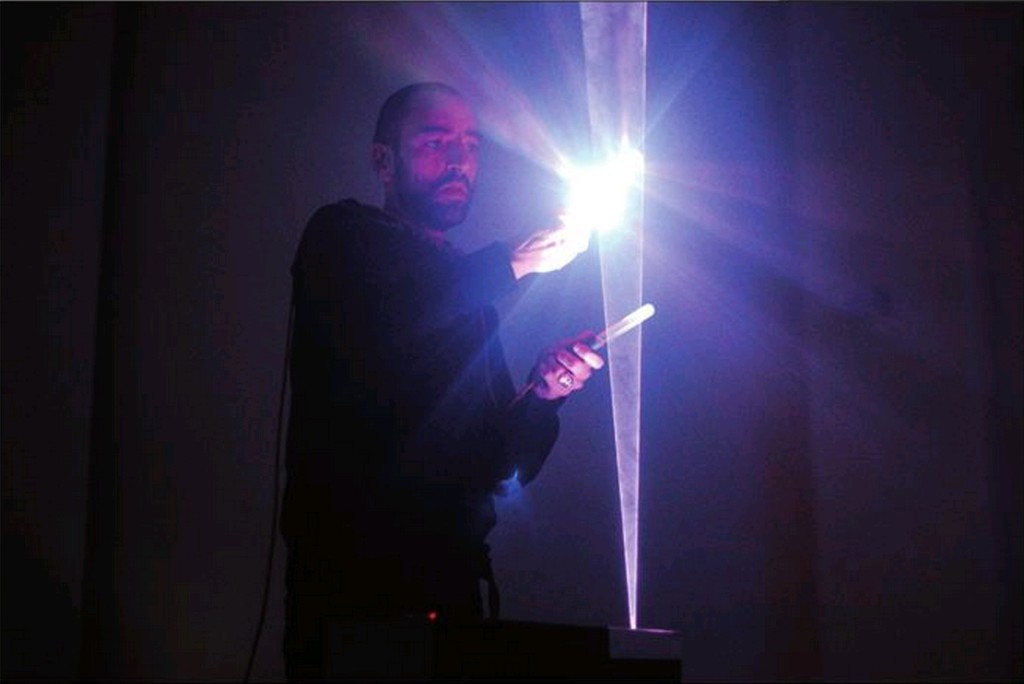
Laser harp
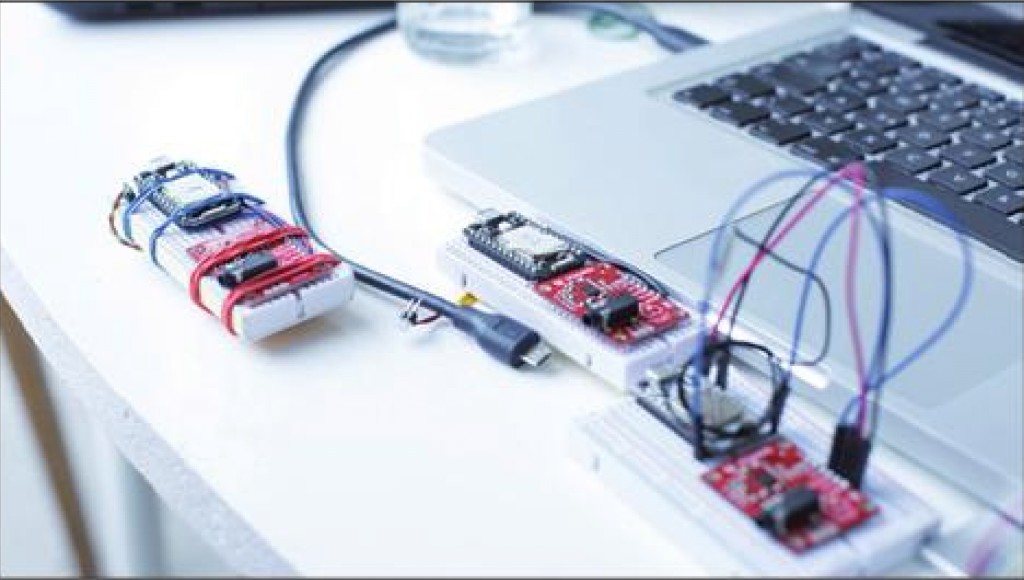
Fabrication of a sensor unit – black board (Spark Core Wifi Module) and red board (heart rate monitor) fixed in a breadboard.
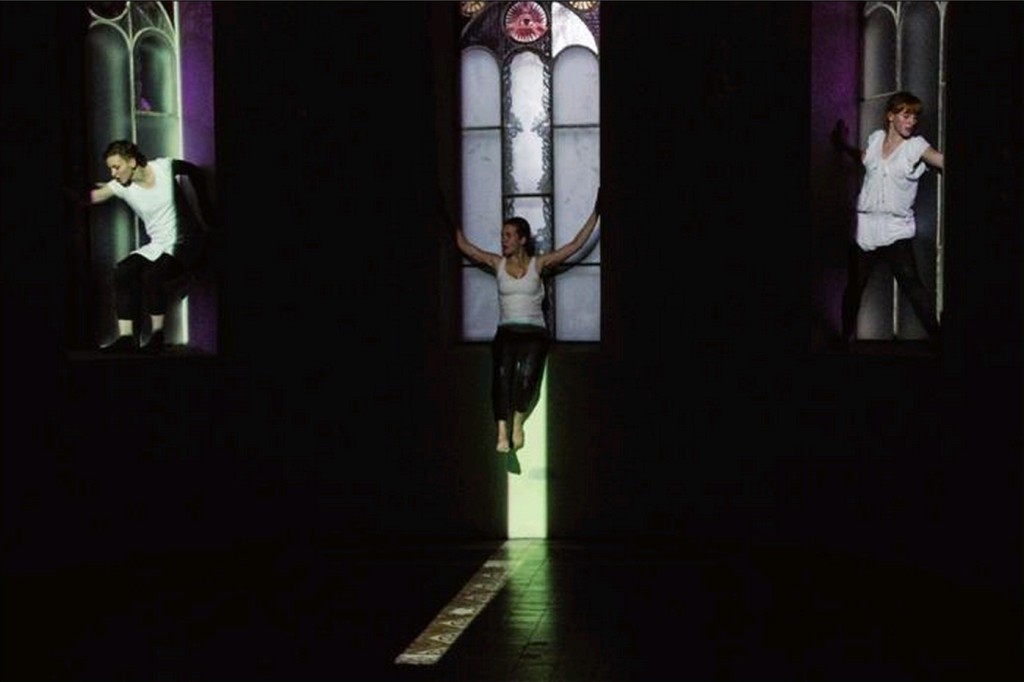
A student performance with video context mapped in advance.
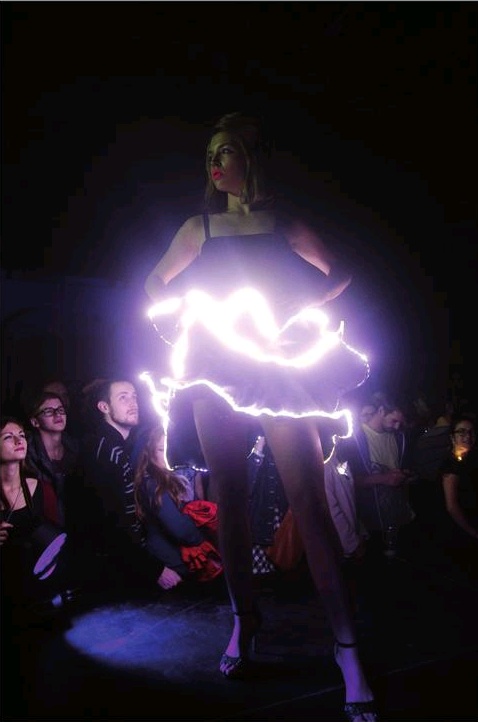
A fashion show. Photo by Václav Mach.
5. Digital theater
Manufacturers of technology constantly churn out new and improved products on us. The need to manage and control the light continues to grow – after all, we live in a digital era. Light, sound and video on the stage are increasingly more advanced subjects, experts on them have long been respected co-creators of performances, emancipated so much that they are able to launch their own projects. There might be the talk of “not that large, but promising market segment” and “constant need to upgrade theaters technology”, but – what is the practice?
Theaters are poorer relatives of the entertainment industry, which is the prime cause of progress in this field. Yet, as much as the control of lights concerns, these fields are similar in many regards and use the same principles. For example, 3D visualizers that are used for visualizations for clients can be just as important for touring companies in the case of theaters (especially those stone theaters with lanterns mounted on a fixed position). Spatial (3D) visualizers are a standard part or accessories of lighting consoles in large firms. But it means only one thing: theatrical lighting designer should learn how to work with a 3D visualizer!
The difference between theater lighting technician and lighting designer is often minimal as much as technical knowledge concerns. What is that such a theatrical lighting designer should know? If we start at the lighting console, the first distinction can be made with a bit of exaggeration between simple and complex consoles. A technician from the field can learn how to operate the simple one in a short time, because many functions are standardized. It is a more difficult with more complex consoles and an untrained person can handle them actually only with a help of another technician – the console operator. Other semi-professions are connected to console operating, in addition to knowledge of syntax and programming of everything that can read DMX signal. Whether it concerns the mentioned ability to work with a virtual model of the scene, knowledge of networking knowledge of MIDI mapping and control of the media servers. And here, the first problem appears – a paradox: people witness a sharp increase in demand for knowledge in individual fields and towards a narrow specialization.
Ways of handling the course of a performance differ “from piece to piece”. There may be situations where it is necessary to decide whether sound, lights and video images are the main medium and others will be synchronized with it. In the case that it is sound, one of the CSC / Live Show Control softwares or Cue Playback software would be used and they can record also IP or MIDI control commands in addition to changes in audio tracks (e.g. for a lighting console). In this case, the sound designer (sound engineer) will participate in the programming and handling of light changes. When using the media servers, the lighting technician will be responsible for handling the video. With increasing demands on professionalism, there appears another need – knowledge of related fields. Manufacturers have responded to this problem in their own way and started producing consoles that can control as lights as sound (e.g. Soundcraft Si Performer, digital audio console with DMX output), media servers are in turn controlled from the lighting console by a DMX signal.
Networking
Individual companies, manufacturers of lighting consoles have their own protocols for network transmission of data (ETC Net, Shownet, MA Net and others). The standard for sending DMX signal via LAN, however, is an open protocol Art-Net; version Art-Net III, launched in 2011, which has more than 32,000 “universes” DMX – 32 768 × 512, i.e. 16 777 216 parameters! Why such a big number?
Pixel graphics
Bitmap control is another feature of the most of major consoles. It is basically converting an image into pixels (pixel image), used for segment LED panels and LED projection walls (individual LED segments have their own DMX address). When managing a large number of lights with the help of a console with bitmap control, a question arises where lighting with instruments ends and where the screening video begins?
Media servers
Media servers that are controlled by DMX started emerging after 2000. At present, they are machines working comprehensively with visual information and it is common that optional masks and features are implemented in them for easier videomapping. Individual firms supply software to their servers that is designed not only for control, but also for any video editing (e.g. media servers by the firm Arkaos are supplied with Video Mapping Software, allowing to work with virtual 3D modeling of scene). One component of media servers is a graphic processor capable of converting any medium in real time into the desired resolution (e.g. precisely because of the LED panels). The standard is HD video already, but for example the servers K4 series by Sony work with incredible resolution of 4096 x 2 160.
The mentioned describes the available novelties and technical trends that might be potentially useful in theater. They are offered by the market in such a way. The reality is a little different, some theaters got “frozen” in the 1980s as much as technical equipment concerns (analog dimmers and consoles, CD players, etc.). Other theaters have bought media servers, but they often lie dormant under the table and technicians tolerate them quietly as a not very necessary piece of hardware. A technician with sufficient knowledge would rather incline towards commercial sphere and that is because of unawareness on the side of directors, choreographers, set designers of the possibilities of artistic impact that can be reached due to new technical equipment.
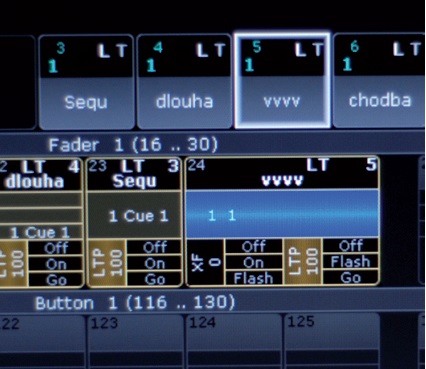
Grand MA OnPC: its connection to the virtual console Grand MA OnPC via Art-Net only by adding a single command in the program VVVV (this is preceded by a proper setting of IP addresses)
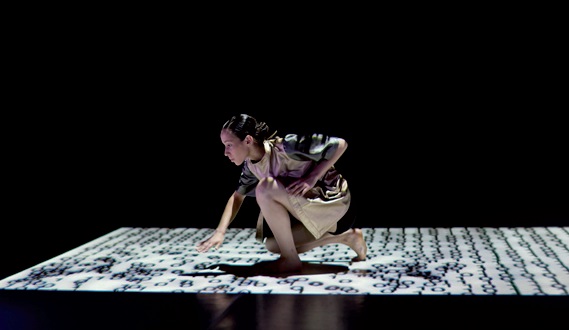
Solver, a student performance (APA Praha, 2011 Theater Ponec); first augmented performance in the Czech production using the Kinect sensor; projection on the white dance floor gives real time feedback, manifested by precise synchronization with movements of the dancers; data from sensor is processed by program VVVV; (Photo: Věra Batovská)
The nature of theater
Looking into history reveals that the theater is of twofold nature in relation to the technical equipment. On the one hand, the revolutionary adoption of innovations, but balanced by long lethargy on the other. There were only three years elapsed between introduction of Edison’s bulb to market and electrification of the Mahen Theater in Brno. The audience in Prague saw the first performance combined with screening already in 1910 (!). Experiments with artistic use of laser on the stage took place in Russia and the USA only a few years after the laser was invented in the 1960s. In contrast a few years ago, there was a functional lamp with production label from 1925 in use in one regional theater. First of all, the theater works mainly with people. It is an art form that uses the human body as a medium – that is the most pliable (tactile) material imaginable. In spite of that it can be very conservative.
In some cases, however, the theater gives impulses to manufacturers of scenic technology. In the last twenty years, there were many experiments with new media and their impact have been surveyed in the performing arts. This development, which new media underwent, is determined by expansion of computers. Interactive art came into existence.
In late 1980s and early 1990s, there was a total “digitization” of art, there was a general spread of images that were processed by computer and digital musical instruments. Handling systems began to be modular, various systems were tested. Requirements for reliability and versatility were replaced by requirements for ease adaptability and availability. There emerged programs that are available as a full artistic tool. There was a boom of freeware. At the end of this development, there is a graphical programming environment Pure Data – an uncrowned king of experimental music. A few years later, the program VVVV, analogous software focused on working with computer graphics cards. It should again be noted the usefulness of the Art-Net protocol. If any of these programs is interconnected with a lighting console, it is possible to control the lights according to the completely individual criteria. This is not about making the work simpler, but about the freedom to choose what parameters will be initial data for the lighting changes, etc.
Computers make easier to manipulate images and video, entirely new artistic disciplines came into existence- for example videomapping. In the performing arts, the videomapping transforms itself into digital set design. For an idea of at what level is this discipline today, it is convenient to see any video of performances by top French video artist Franc Aleu Rivera. In relation to extending human activities in the virtual environment, there is a strong need to convert motion into digital form. Tracking develops. A set for tracking, consisting of a camera as a sensor and of a projector as a carrier of medium, has been spread out for the so-called augmented performance, in which the dancer’s movement is a starting signal for audio or video, which is transmitted back onto the stage in an altered form. Professional systems of this kind are already offered by many manufacturers under the name interactive floor. Various systems are used, an IR camera is used as a sensor, Kinect sensor and others. With the use of video tracking, it is possible that any costume can be directly ‘mapped’ on the actors, which will change its position in harmony with actor’s movements (a digital costume). It’s necessary to realize that in this case, the real time may mean a delay of only one “frame” (1/25 second, i.e. one “window” of the video). In the commercial sector, the so called tracking systems are used for the purpose of accurate motion of intelligent lights. In the 1990s, the company Wybron had developed the system Autopilot, currently probably the most popular commercial product is a tracking system BlackTrax (the sensor is a high-frequency interface). As a component of these systems, there are also programs for facilitation of accurate focusing, which lighting designers make directly by motion in the scene. There are programs coming into existence that allow controlling lights via a virtual console with the help of converter USB-DMX. The faders, as they are known from classic consoles, are connected via a MIDI controller. Everything, including the price, is minimized. This trend is followed by consoles manufacturers. A strong market has emerged with software versions of consoles, nowadays already provided with a special wing – a wing with traction riders, mostly with an integrated DMX converter. For example the MAlighting, one of the most prestigious manufacturer of consoles, has its software version of Grand MA OnPC. After the purchase the MA converter, the user gets a full computer version of the console. The price ranges in the thousands of Euros, the software itself is offered free of charge.

Performance Bluebeard (Dejvické Theatre, 2010,) is probably the first use of videomapping in Czech theater production with the help program Resolume. (Photo: Hynek Glos)
ALEU RIVERA, Franc. Video. In: [online]. francaleu.com. [cit. 2015-08-09]. Available from: https://vimeo.com/user1935184
Conclusion
Using modern technologies in the theatrical operation can be seen at several levels. On one hand, experimental performances where handling systems are in general modularly constructed to measure and the basis is a computer. On the other hand, there is a strong current, which neglects the modern principles of handling, and if it would be allowed to be left in peace, it will be solving its important theatrical problems with CD and two lighting cues for a long time. Theatre can simply live its own life. Many technical innovations are introduced in the theater with difficulties, because the artists have no experience with them and don’t know how to work with them (within the limits of their own professions). Producers and distributors of equipment, suitable for theater operation, should realize that it is necessary not only to educate (technicians), but also inspire (directors, choreographers and others.).
Sources and literature
Stage lighting accessories. 2001-. Wikipedia: the free encyclopedia [online]. San Francisco (CA): Wikimedia Foundation [Retrieved 2015-05-07]. Available from: http://en.wikipedia.org/wiki/Stage_lighting_accessories
RICHARDSON, Steve. Lighting Instruments. WPI Technical Theatre Handbook [online]. [Retrieved 2015-05-07]. Available from: http://www.gweep.net/~prefect/pubs/iqp/node60.html
Stage lighting instrument. 2001-. Wikipedia: the free encyclopedia [online]. San Francisco (CA): Wikimedia Foundation [Retrieved 2015-05-07]. Available from: http://en.wikipedia.org/wiki/Stage_lighting_instrument
Fixtures – Stage Light Units. Stage Lighting Store: Your Online Source for Stage Lighting [online]. [Retrieved 2015-05-07]. Available from: http://www.stagelightingstore.com/Stage-Light-Units
WILD, Larry. 2001. Lighting Instruments: Ellipsoidal Reflector Spotlights [online]. Aberdeen: Northern State University [Retrieved 2015-05-07]. Available from: http://www3.northern.edu/wild/litedes/ld05.htm
LightingTrainer.com: Your Online Source For Stage Lighting Training [online]. 2013. [Retrieved 2015-05-07]. Available from: http://www.lightingtrainer.com/
Dimmers, Watts and Fuses. Theatrecrafts.com [online]. [Retrieved 2015-05-07]. Available from: http://www.theatrecrafts.com/page.php?id=815
WILLIAMS, Bill. 1999. Lighting Mechanics. Stage Lighting Design [online]. [Retrieved 2015-05-07]. Available from: http://www.mts.net/~william5/sld/sld-600.htm
WILLIAMS, Bill. 1999. Stage Lighting Fixtures. Stage Lighting Design [online]. [Retrieved 2015-05-07]. Available from: http://www.mts.net/~william5/sld/sld-500.htm
WILLIAMS, Bill. 1999. The PAR64 for Entertainment Lighting [online]. [Retrieved 2015-05-07]. Available from: http://www.mts.net/~william5/library/par64doc.htm
Introduction to Lighting Instruments [online]. [Retrieved 2015-05-07]. Available from: http://paulcarbone.com/SHS/Intro%20to%20instruments.html
LEIGH, Graham. Stage Lanterns and Control Equipment. The Drama InfoWeb [online]. [Retrieved 2015-05-07]. Available from: http://www.dramainfoweb.co.uk/pages/lighting_2.html
Types of Lantern. Theatre Crafts: entertainment technology resources [online]. [Retrieved 2015-05-07]. Available from: http://www.theatrecrafts.com/lanterns
Lantern Types. In: Blue room: bringing backstage online [online]. [Retrieved 2015-05-09]. Available from: http://www.blue-room.org.uk/wiki/Category:Lantern_Types
Some manufacturers of lighting design technology:
Controls, dimming and network manufacturers:
Mix of all specializations and others:
Literature
ARNOLD, Richard L. Scene technology. Englewood Cliffs, N.J.: Prentice-Hall, 1985. viii, 343 p. ISBN 01-379-1765-1. Available also from: http://amzn.com/013791765
BELLMAN, Willard F. Scenography and stage technology: an introduction. New York: Crowell, 1977. xiv, 625 p. ISBN 06-900-0872-4. Available also from: http://amzn.com/0690008724
BOX, Harry C. Set lighting technician’s handbook: film lighting equipment, practice, and electrical distribution. 4th ed. Boston, MA: Focal Press, 2010. xxii, 593 p. ISBN 02-408-1075-9. Available also from: http://amzn.com/0240810759
BROCKETT, Oscar G, Margaret MITCHELL a Linda HARDBERGER. Making the scene: a history of stage design and technology in Europe and the United States. San Antonio, Tex.: Tobin Theatre Arts Fund, 2010. xi, 365 p. ISBN 978-029-2722-736. Available also from: http://amzn.com/0292722737
CADENA, Richard. Automated lighting: the art and science of moving light in theatre, live performance, and entertainment. 2nd ed. Burlington, MA: Focal Press/Elsevier, 2010. xxi, 450 p. ISBN 02-408-1222-0. Available also from: http://amzn.com/0240812220
CADENA, Richard. Electricity for the entertainment electrician. Boston: Elsevier/Focal Press, 2009. xxiv, 245 p. ISBN 02-408-0995-5. Available also from: http://amzn.com/0240809955
CADENA, Richard. Focus on lighting technology. Royston: Entertainment Technology, 2002. ISBN 978-190-4031-147. Available also from: http://amzn.com/1904031145
CAMPBELL, Drew. Digital technical theater simplified: high tech lighting, audio, video, and more on a low budget. New York: Allworth Press, 2011. p. cm. ISBN 978-158-1158-557. Available also from: http://amzn.com/1581158556
Equipment. In: CUNINGHAM, Glen. Stage lighting revealed: a design and execution handbook. Prospect Heights, IL: Waveland Press, 1993. p. 43 – 85. ISBN 9781577662624. Available also from: http://amzn.com/1577662628
FITT, Brian a Joe THORNLEY. Lighting technology: a guide for television, film, and theatre. 2nd ed. Boston: Focal Press, 2002. viii, 297 p. ISBN 02-405-1651-6. Available also from: http://amzn.com/0240516516
HUNTINGTON, John. Show networks and control systems: formerly control systems for live entertainment. Brooklyn, N.Y.: Zircon Designs Press, 2012. xx, 472 p. ISBN 06-156-5590-4. Available also from: http://amzn.com/0615655904
HUNTINGTON, John. Show networks and control systems: formerly control systems for live entertainment. Brooklyn, N.Y.: Zircon Designs Press, 2012. xx, 472 p. ISBN 06-156-5590-4. Available also from: http://amzn.com/0615655904
HUNTINGTON, John. Show networks and control systems: formerly control systems for live entertainment. Brooklyn, N.Y.: Zircon Designs Press, 2012. xx, 472 p. ISBN 06-156-5590-4. Available also from: http://amzn.com/0615655904
IZENOUR, George C. Theater technology. New York: McGraw-Hill Book Co., 1988. xxix, 552 p. ISBN 00-703-2087-X. Available also from: http://amzn.com/007032087X
MOBSBY, Nick. Practical DMX. Rev. ed. Cambridge [U.K.]: Entertainment Technology Press, 2006. ISBN 978-190-4031-369. Available also from: http://amzn.com/1904031366
MORRIS, Bert. Getting The Most From Your Followspot: an Operator’s Handbook. Theatrical Technicians, Inc., 1988. ISBN 978-0966561609. Available also from: http://amzn.com/0966561600
MUMM, by Robert C. Photometrics handbook. 2nd ed. Louisville, Ky: Broadway Press, 1997. ISBN 978-091-1747-379. Available also from: http://amzn.com/0911747370
SANDSTRÖM, Ulf. Stage lighting controls. Oxford: Focal, 1997. ISBN 978-024-0514-765. Available from: http://amzn.com/0240514769
SCHILLER, Brad. The automated lighting programmer’s handbook. 2nd ed. Boston: Elsevier, Focal Press, 2011. xxv, 213 p. ISBN 978-024-0815-534. Available also from: http://amzn.com/024081553X
SIMPSON, Robert S. Lighting control-technology and applications. Boston: Focal Press, 2003. ix, 564 p. ISBN 978-024-0515-663. Available also from: http://amzn.com/0240515668
Test

